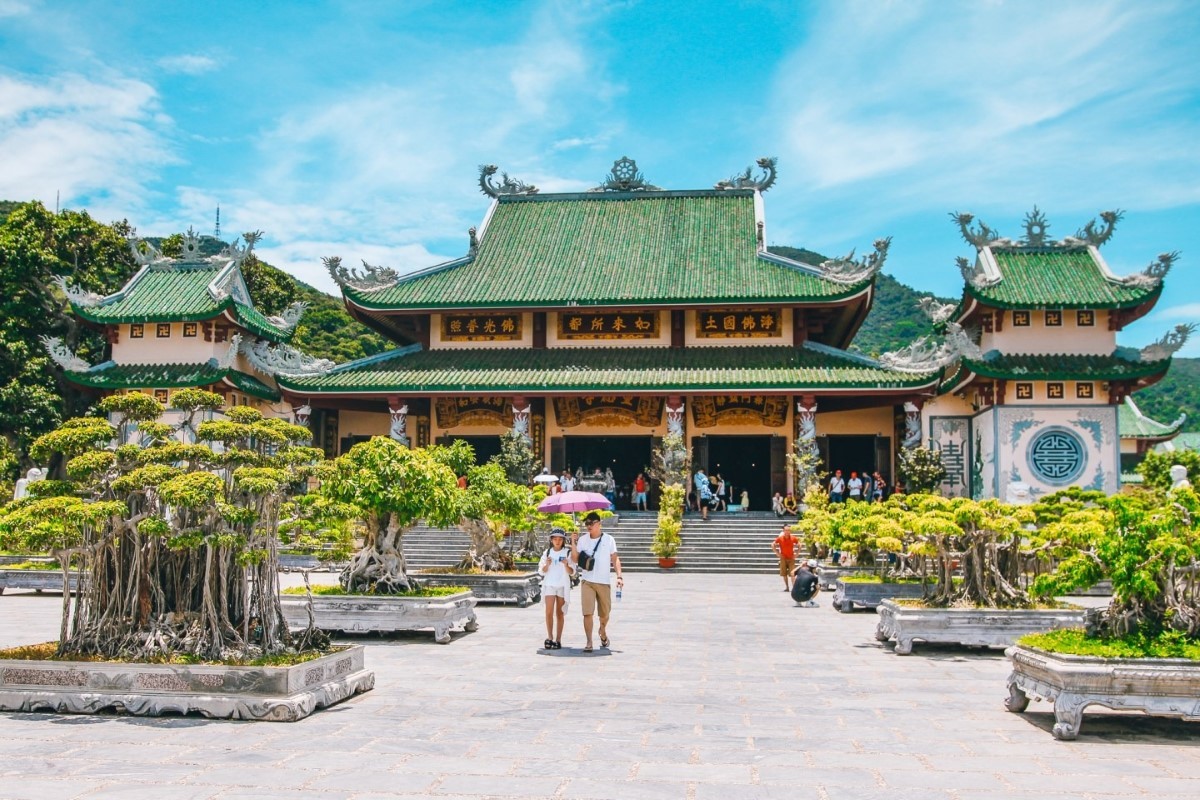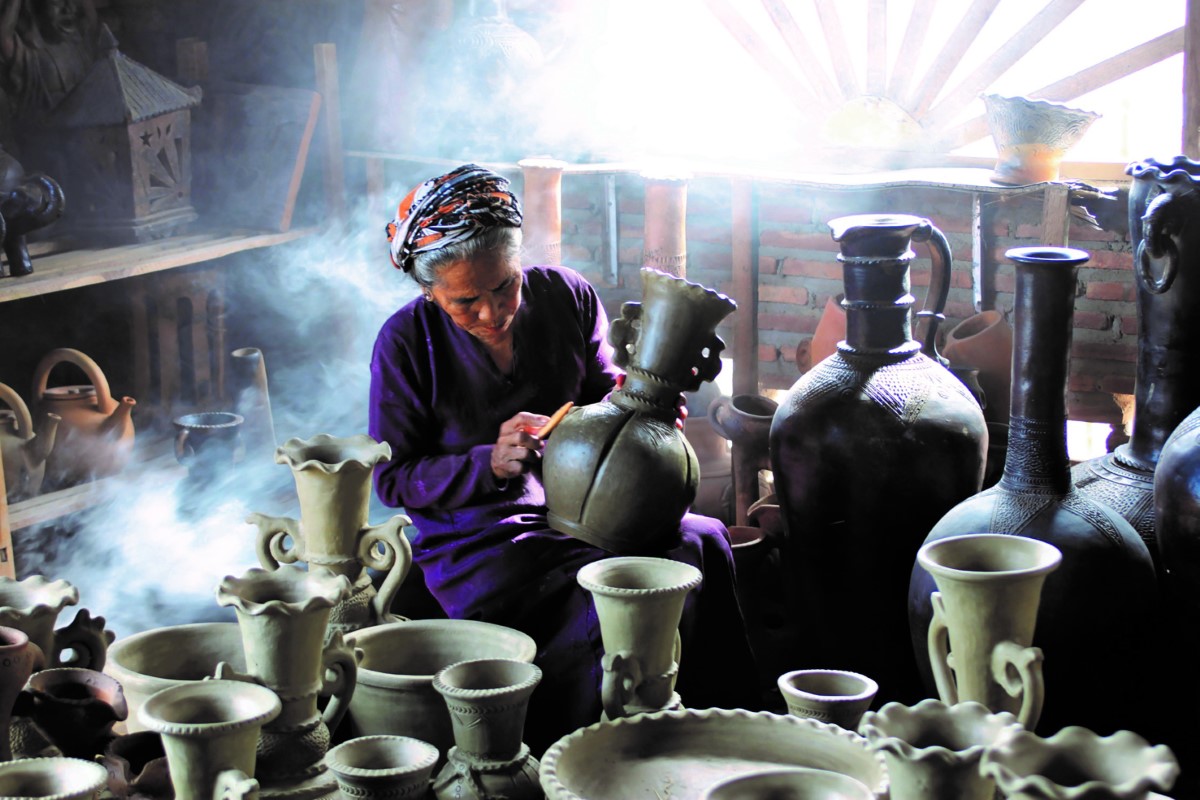Hoi An Ancient Town Travel Guide: History, Attractions & Tips
Step into a realm where history dances with vibrant culture. Hoi An Ancient Town, a UNESCO World Heritage site, beckons travelers with its enchanting charm. Here, the echoes of past centuries resonate through the well-preserved streets, inviting you to explore a tapestry woven from the threads of diverse cultures.
Yet, amidst the allure, many travelers often miss out on the hidden gems and rich narratives that define this historical hub. What if you could discover a place that transcends mere sightseeing, where every corner whispers stories of traders and artisans? Imagine wandering through ancient streets, where Chinese lanterns sway in the breeze, and the aroma of local delicacies fills the air.
In this guide, we promise to unveil the many layers of Hoi An, providing you with practical tips, cultural insights, and unmissable experiences. Picture yourself savoring street food, exploring artisan workshops, and witnessing the breathtaking Lantern Festival — an experience that will stay with you long after you leave.
Hoi An Ancient Town offers a well-preserved glimpse into Vietnam’s history, showcasing a unique blend of Chinese, Japanese, and French architecture. Visitors can explore vibrant markets, historic temples, and lantern-lit streets while enjoying authentic local culture and cuisine. The town’s UNESCO status highlights its cultural significance and charm.
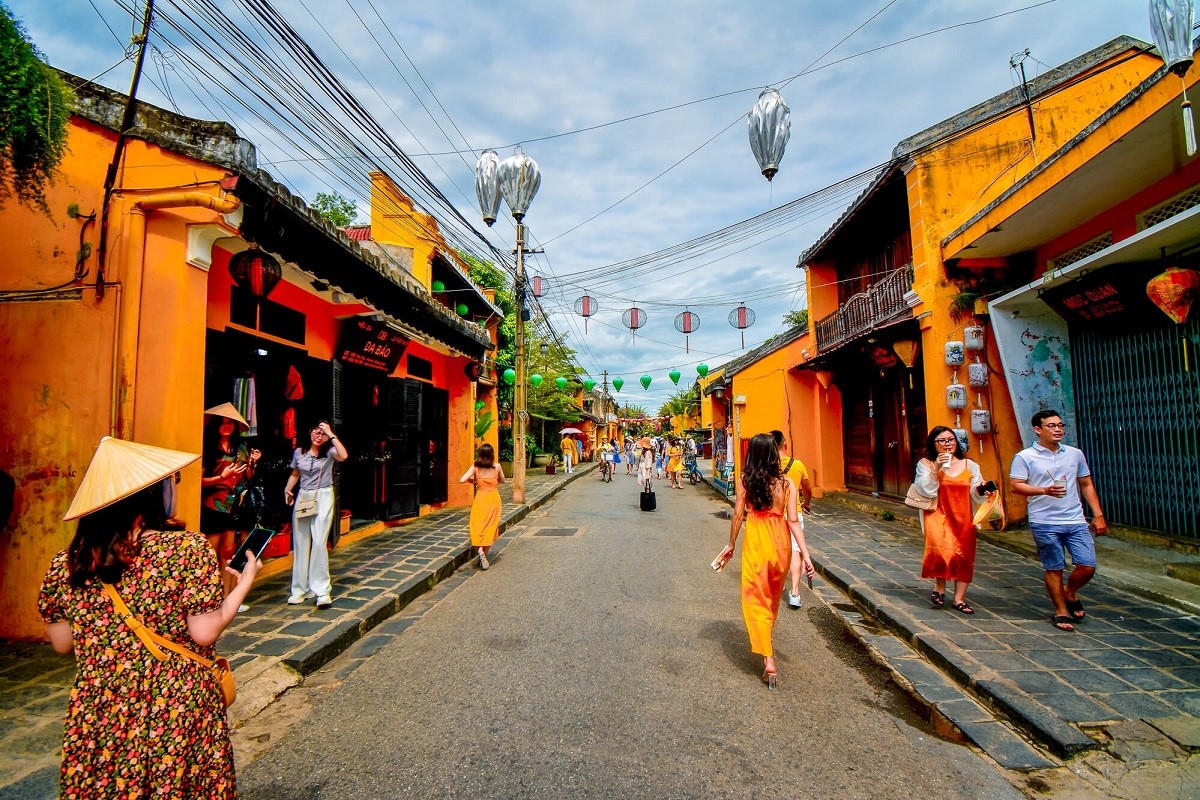
Introduction to Hoi An Ancient Town
Hoi An Ancient Town is a captivating destination rich in history and cultural heritage. Nestled on the banks of the Thu Bon River, this well-preserved Southeast Asian trading port enchants visitors with its charming streets, architectural fusion, and a welcoming atmosphere that feels like stepping back in time. Known as a living museum, Hoi An Ancient Town invites travelers to experience a slower pace of life filled with authentic cultural moments and vibrant local traditions. Explore this UNESCO heritage site and immerse yourself in its timeless allure.
Plan your visit to Hoi An Ancient Town today and discover why this historic gem continues to fascinate travelers worldwide.
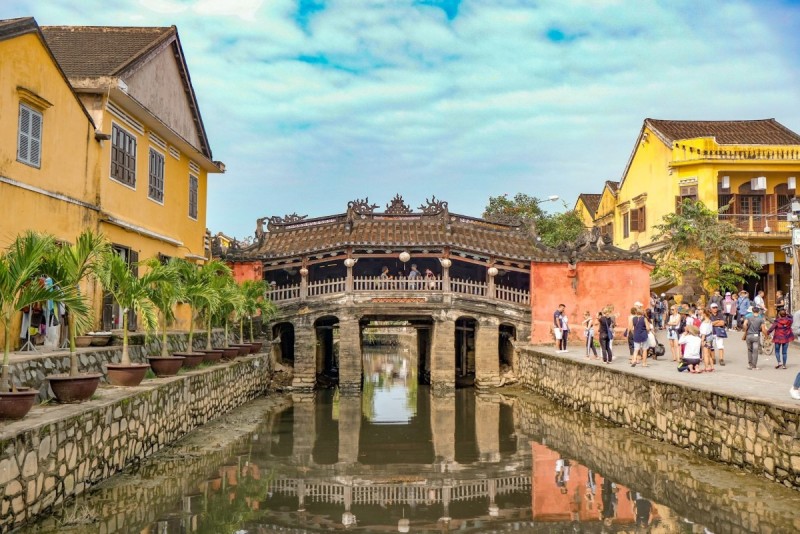
Overview of Hoi An Ancient Town
Located along the Thu Bon River, Hoi An Ancient Town is famed for its enchanting ambiance and unique blend of cultures. The town’s slow pace and welcoming atmosphere make it a perfect place to wander and soak in the sights. Often described as a living museum, the streets reveal centuries of history through well-maintained architecture and vibrant local life. Walking through Hoi An feels like stepping into a storybook where every corner offers a glimpse into its rich heritage and ongoing traditions.
Explore the Hoi An Ancient Town location on Thu Bon River and enjoy a memorable journey through time.
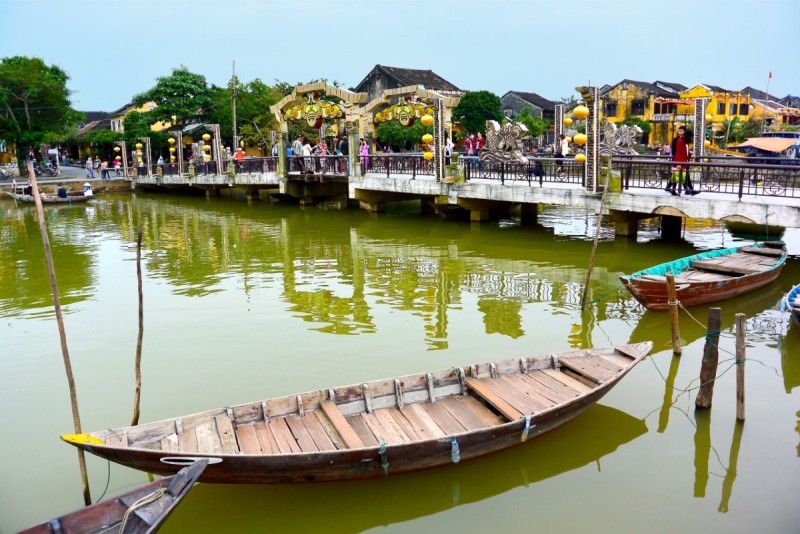
Significance as a UNESCO World Heritage Site
The designation of Hoi An UNESCO World Heritage status highlights its importance as a rare example of a Southeast Asian trading port with exceptional cultural preservation. This recognition stems from the town’s well-preserved architecture, reflecting a harmonious fusion of Chinese, Japanese, and French influences. The UNESCO title brings responsibility to protect and maintain the historic fabric, ensuring that Hoi An remains a treasure for future generations. Understanding the criteria behind this designation helps visitors appreciate the global and local efforts dedicated to conserving its unique heritage.
Learn more about the UNESCO designation criteria for Hoi An and the cultural preservation that keeps this town alive today.
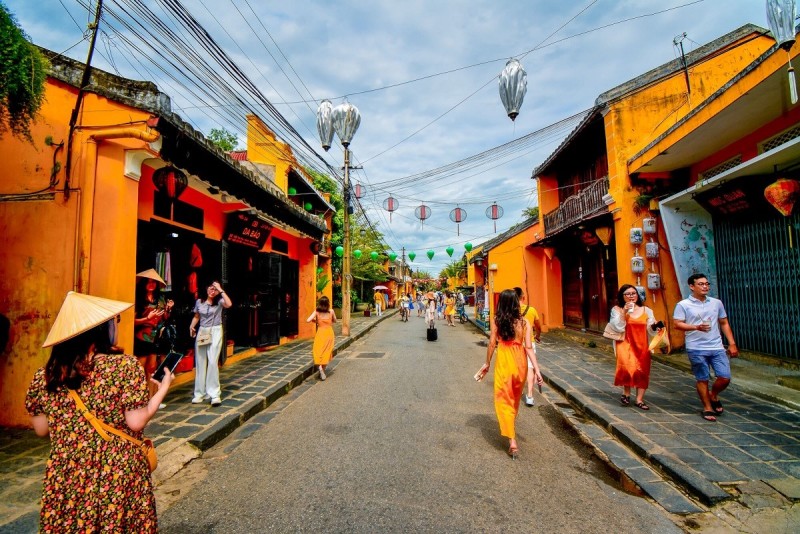
Unique Blend of Cultures and Architecture
Hoi An Ancient Town is a vibrant showcase of multicultural heritage, visible through its distinctive architecture and rich history. This town reflects a unique cultural blend in Hoi An Ancient Town, where Chinese assembly halls stand alongside the iconic Japanese Covered Bridge and charming French colonial buildings. Each structure tells a story of diverse influences coming together, forming an extraordinary tapestry of design and tradition. The interplay of color, light, and intricate details invites you to appreciate how history and culture have shaped this living museum.
Discover the fascinating cultural blend in Hoi An Ancient Town and marvel at the architectural harmony that defines its timeless beauty.
Influences from Chinese, Japanese, and French Heritage
This section explores specific examples that highlight the multicultural architecture of Hoi An Ancient Town:
- Japanese Covered Bridge: A 16th-century structure built by Japanese merchants, notable for its pagoda roof and the legendary statues of a monkey and a dog guarding the bridge.
- Chinese Assembly Halls: These served as meeting places for Chinese merchant groups, featuring elaborate carvings, intricate altars, and richly decorated murals.
- French Colonial Buildings: Marked by their soft yellow walls, shuttered windows, and elegant facades, these buildings blend French stylistic elements with traditional Vietnamese design.
- Traditional Vietnamese Design: Evident in the narrow merchant houses with deep interiors, wooden beams, and delicate mother-of-pearl inlays that create a seamless cultural integration.
Each element embodies the rich history of trade and cultural exchange, shaping Hoi An into a unique architectural treasure.
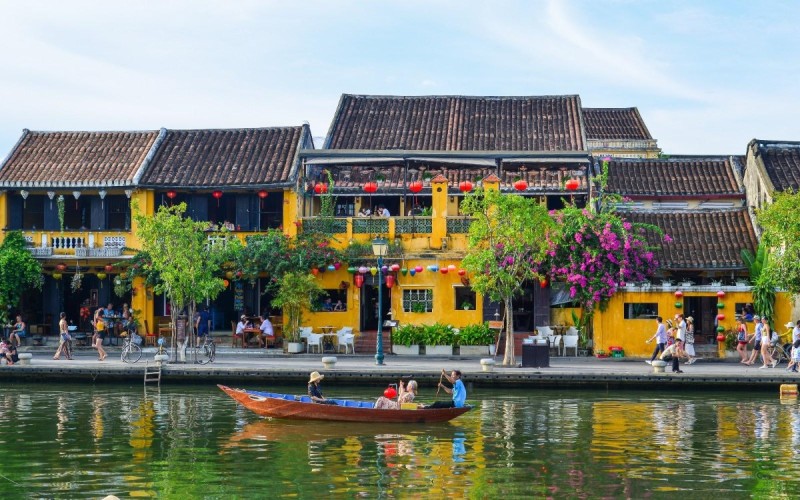
Why Visit Hoi An Ancient Town?
Hoi An Ancient Town offers a captivating blend of history, culture, and vibrant local life that draws travelers seeking more than just sightseeing. Why visit Hoi An Ancient Town? Because it delivers an authentic cultural experience that immerses you in daily life, from bustling markets to traditional crafts. The town’s well-preserved historic sites allow you to step back in time and explore architecture that tells centuries-old stories. Beyond its heritage, Hoi An comes alive during its famous lantern festivals, where colorful lights illuminate the river, creating an enchanting atmosphere. The warm, welcoming community and the lively local lifestyle make every visit memorable and unique.
Discover why Hoi An Ancient Town continues to inspire travelers with its timeless charm and rich experiences.
Authentic Cultural Experience
Exploring Hoi An Ancient Town offers you an authentic cultural experience that connects you deeply with local traditions and everyday life. You can participate in hands-on activities and observe unique customs that have been preserved for generations.
- Lantern-Making Workshops: Learn the art of crafting traditional silk lanterns using bamboo frames and vibrant fabrics, a skill passed down through local artisans.
- Traditional Fishing Methods: Experience life on the water by joining local fishermen who use age-old techniques with basket boats and nets.
- Family-Run Craft Workshops: Visit small-scale workshops producing lanterns, pottery, or tailor-made garments, allowing direct interaction with skilled artisans.
- Participation in Festivals: Join the monthly lantern festival or Tet celebrations to witness cultural rituals and communal joy.
- Culinary Traditions: Taste authentic dishes prepared with recipes shared across generations, often in family-run eateries or cooking classes.
These immersive experiences allow you to genuinely engage with the culture of Hoi An Ancient Town. Plan your visit to enjoy an authentic cultural experience that leaves lasting memories.
Well-Preserved Historic Sites
Hoi An Ancient Town is home to numerous well-preserved historic sites that showcase its rich heritage and architectural legacy. These landmarks offer a tangible connection to the town’s storied past and cultural significance.
- Japanese Covered Bridge: A 16th-century architectural marvel built by the Japanese community, featuring intricate woodwork and iconic guardian statues.
- Tan Ky Old House: A merchant’s home preserved across seven generations, notable for its blend of Chinese, Japanese, and Vietnamese architectural styles.
- Chinese Assembly Halls: Community centers with lavish decorations, carved altars, and murals serving various Chinese merchant groups.
- Traditional Merchant Houses: Narrow, deep homes with wooden beams, mother-of-pearl inlays, and serene inner courtyards.
- Historic Temples and Pagodas: Places of worship adorned with dragon carvings, colorful ceramics, and spiritual altars reflecting religious traditions.
Visiting these sites lets you step back in time and appreciate Hoi An Ancient Town’s commitment to heritage preservation. Don’t miss exploring these well-preserved historic sites for a deeper understanding of the town’s past.
Vibrant Local Lifestyle and Festivals
The vibrant local lifestyle and festive atmosphere are integral to the charm of Hoi An Ancient Town. The town buzzes with markets, celebrations, and communal activities that invite you to experience its lively spirit.
- Central Market and Food Stalls: A bustling hub where locals buy fresh produce and street food vendors offer traditional snacks and meals.
- Lantern Festivals: Each full moon, the town’s electric lights dim, and thousands of lanterns illuminate streets and the Thu Bon River, creating a magical scene.
- Riverfront Promenades: Popular gathering spots where locals and visitors mingle amid cafes, music, and the scenic river views.
- Traditional Performances: Regular folk music, dance, and theatrical shows that showcase Hoi An’s cultural richness.
- Seasonal Celebrations: Events like Tet (Vietnamese New Year) and Mid-Autumn Festival bring vibrant decorations, food, and rituals to the town.
These lively traditions and community events offer a window into the daily and celebratory life of Hoi An Ancient Town. Immerse yourself in the vibrant local lifestyle and festivals to enrich your visit.

Historical Background of Hoi An Ancient Town
Explore the rich historical background of Hoi An Ancient Town, from its origins as Faifo trading port to its role as a Southeast Asian maritime gateway.
Hoi An Ancient Town holds a remarkable place in history as a bustling trading port and cultural crossroads. Once known as Faifo, it grew from the 15th century through the 19th century into a major maritime gateway linking Southeast Asia with the world. This history shaped the town’s vibrant architecture, cultural diversity, and its lasting heritage. Understanding the historical background of Hoi An Ancient Town offers deeper appreciation of its unique character and why it remains a treasured destination today.
Experience the rich history of Hoi An Ancient Town and see how centuries of trade and culture shaped this living museum.

Origins and Development Through Centuries
Tracing the origins and development of Hoi An Ancient Town reveals its transformation into a thriving international trading hub. Known as Faifo, it attracted merchants from China, Japan, Portugal, and France, facilitating vibrant exchange of goods and culture. This early history laid the foundation for the town’s enduring cultural fusion and architectural heritage.
Discover the early trading port history of Hoi An Ancient Town and how the Faifo trading hub connected continents through silk, spices, and ceramics.
Early Trading Port History (15th-19th Centuries)
During the 15th to 19th centuries, Faifo rose as a key trading port bustling with merchants and diverse goods. This period marked the height of its economic and cultural significance.
- Silk Trade: The export of fine silks connected Faifo to markets across Asia and Europe.
- Spice Trade: Valuable spices passed through its ports, enriching its commerce and culinary influences.
- Ceramics Export: Local pottery and imported ceramics were significant trade items, reflecting artistry and demand.
- Timber Trade: Rare woods were sourced and shipped to support construction and crafts elsewhere.
- Merchant Nationalities: Traders from China, Japan, Portugal, and France created a cosmopolitan community.
This vibrant trade shaped Hoi An Ancient Town’s multicultural fabric and economic prosperity. Plan your visit to explore the legacy of Faifo trading history firsthand.
Role in Regional and International Trade
Hoi An Ancient Town played a strategic role as a maritime gateway linking Southeast Asia to broader international networks. This position influenced its growth and cultural exchange.
- Regional Trade Hub: Served as a key port connecting regional markets across Southeast Asia.
- International Commerce: Facilitated trade with distant nations, bringing diverse goods and ideas.
- Maritime History: Its deep-water port allowed access for larger vessels, boosting its importance.
- Cultural Exchange: Trade fostered rich cultural interactions, reflected in architecture and customs.
- Economic Significance: The port’s activity supported local prosperity and population growth.
Understanding this maritime gateway role reveals why Hoi An remains an essential chapter in regional history. Discover the impact of Hoi An’s maritime gateway role on Southeast Asia’s trade landscape.
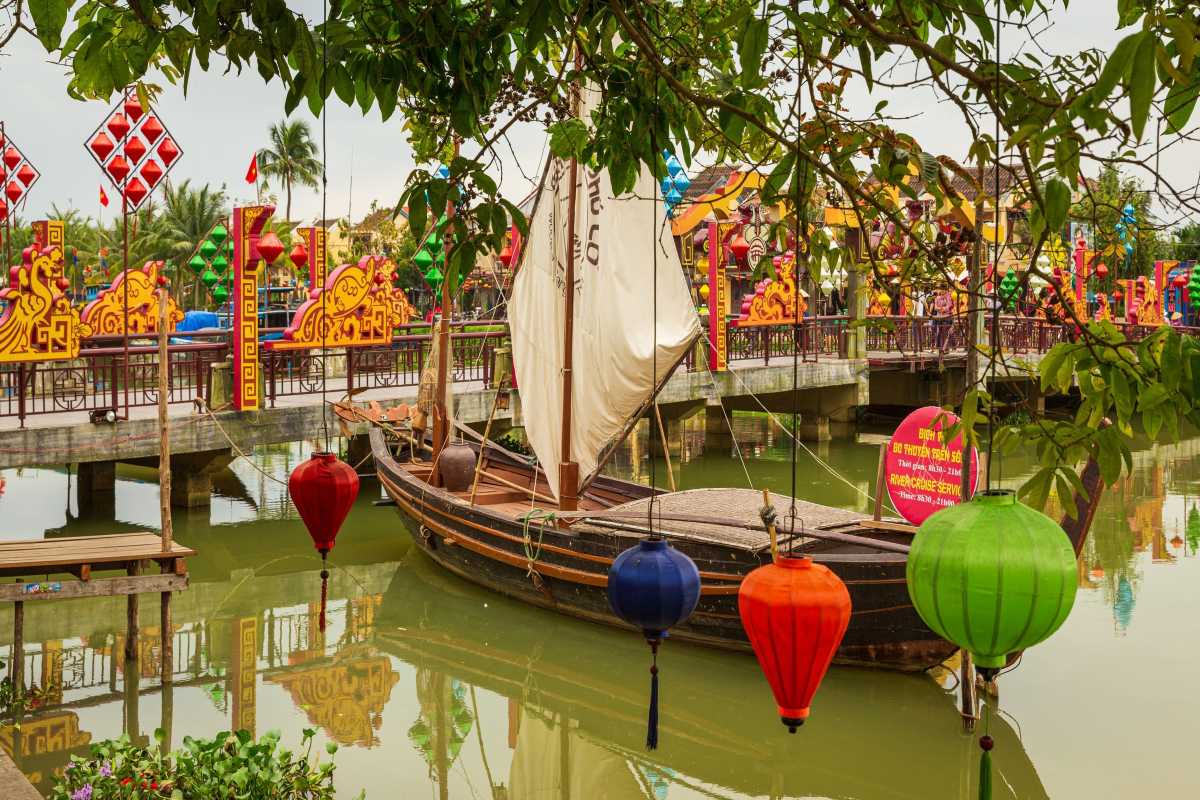
Architectural and Cultural Evolution
The story of Hoi An Ancient Town is etched in its evolving architecture and cultural landmarks. This evolution reflects centuries of trade, cultural exchange, and local craftsmanship, creating a rich urban fabric that combines functionality with symbolism. By exploring the town’s distinctive buildings and urban layout, you gain insight into its multicultural heritage and the deep-rooted traditions preserved through architecture. Understanding the architecture evolution in Hoi An reveals how communal values, spirituality, and commerce shaped the town’s unique character.
Experience the harmonious blend of cultures through the architecture of Hoi An Ancient Town and appreciate its enduring legacy.
Traditional Merchant Houses and Temples
Typical of Hoi An Ancient Town’s architecture are the traditional merchant houses and cultural temples that reveal both lifestyle and spiritual values. These structures offer a window into the town’s historic urban life and social fabric.
- Merchant House Layout: Narrow facades with deep interiors, multiple courtyards, designed to maximize space and ventilation.
- Construction Materials: Predominantly dark wood with intricate hand-carved details showcasing master craftsmanship.
- Family Altars: Central to homes, reflecting the spiritual life and ancestor worship practiced by merchant families.
- Communal Temples: Serving as social and religious centers for different community groups, featuring ornate altars and murals.
- Assembly Halls: Lavishly decorated spaces that doubled as gathering places and places of worship for merchant guilds.
These architectural elements symbolize the intersection of commerce, family, and faith that defines Hoi An Ancient Town’s heritage. Plan your visit to explore the remarkable merchant houses and temples up close.
Preservation of Ancient Streets and Landmarks
Preserving the historic streets and landmarks of Hoi An Ancient Town is a complex task that involves safeguarding delicate wooden structures against environmental challenges while maintaining authenticity.
- Traditional Building Techniques: Use of natural materials and craftsmanship methods passed down through generations ensures the authenticity of restorations.
- Wooden Structures: Vulnerable to humidity, pests, and weather, requiring ongoing care and specialized treatment.
- Humid Climate Challenges: The tropical environment accelerates wear, demanding continuous preservation efforts.
- Iconic Streetscapes: Narrow alleys and cobblestone streets create a distinctive urban landscape cherished by locals and visitors alike.
- Conservation Programs: Coordinated efforts involving local communities and international partners focus on sustainable heritage management.
These efforts protect the town’s timeless charm, allowing future generations to experience Hoi An Ancient Town as a living heritage site. Discover how preservation breathes life into the ancient streets and landmarks you’ll explore.
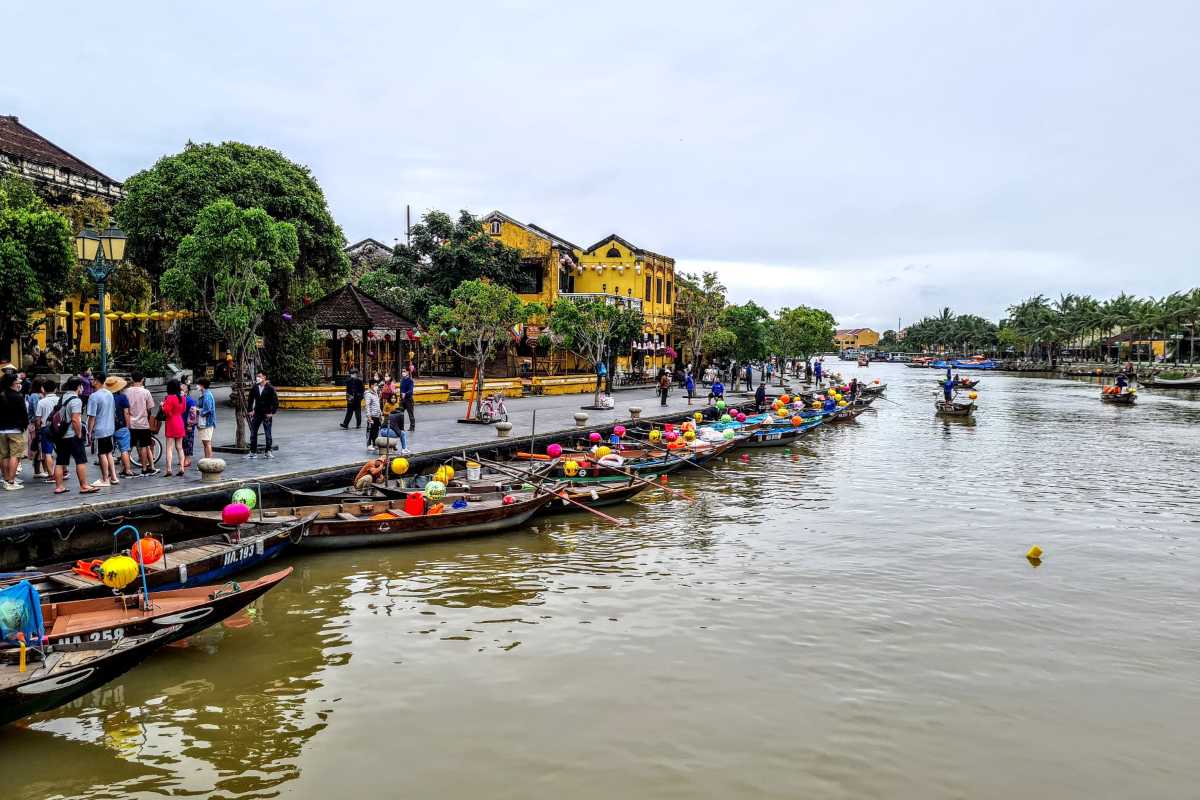
Impact of Modern Preservation Efforts
Modern preservation efforts in Hoi An Ancient Town aim to balance heritage conservation with the pressures of urbanization and tourism. These initiatives involve international support, community engagement, and sustainable development programs to protect the town’s unique character while accommodating modern demands. Understanding these efforts highlights the challenges and successes in maintaining Hoi An’s authenticity amid growth.
Learn about the ongoing Hoi An UNESCO conservation programs and how local heritage protection efforts shape the town’s future.
UNESCO Designation and Conservation Programs
The UNESCO designation for Hoi An has brought international recognition and funding for vital conservation projects aimed at preserving its historic fabric.
- Heritage Protection: Strict regulations govern building restorations, urban planning, and cultural preservation.
- Conservation Funding: Financial support from international bodies enables restoration of landmarks and infrastructure improvements.
- International Cooperation: Partnerships with global experts ensure best practices in sustainable heritage management.
- Public Awareness: Programs raise knowledge among locals and visitors about the importance of preservation.
- Cultural Tourism Promotion: Responsible tourism initiatives help generate income while minimizing harm to heritage sites.
These programs provide a solid foundation for maintaining the charm and significance of Hoi An Ancient Town for generations to come. Discover how UNESCO’s impact on Hoi An supports lasting preservation.
Local Community Involvement in Heritage Protection
The heart of Hoi An Ancient Town’s preservation lies in the active participation of its local community, who uphold traditions and contribute to heritage projects.
- Community Heritage Projects: Locals organize restoration and maintenance of historic buildings and public spaces.
- Traditional Crafts Preservation: Artisans continue age-old crafts such as lantern-making, pottery, and tailoring.
- Cultural Identity: Family and communal rituals strengthen bonds and maintain living heritage.
- Educational Initiatives: Programs engage youth in learning about their cultural roots and conservation responsibilities.
- Volunteer Activities: Residents participate in environmental clean-ups and tourism management efforts.
This grassroots involvement ensures that preservation is not just about buildings but about sustaining Hoi An’s cultural soul. Experience the warmth of local restoration efforts that keep the town vibrant.
Challenges of Tourism and Urbanization
While tourism has boosted Hoi An Ancient Town’s economy, it also presents challenges requiring careful management to sustain its heritage.
- Overcrowding: Popular seasons bring large crowds, straining infrastructure and impacting visitor experience.
- Commercialization: Growth in tourism-related businesses risks diluting authentic cultural expressions.
- Waste Management: Increased waste production requires effective disposal and recycling strategies.
- Urban Development Pressure: New constructions and traffic threaten historic sites and the town’s ambiance.
- Sustainability Efforts: Initiatives promote responsible travel and limit environmental footprints.
Understanding these issues emphasizes the need for visitors to support sustainable tourism to protect Hoi An’s unique heritage. Learn how addressing tourism impact on Hoi An helps preserve its charm.
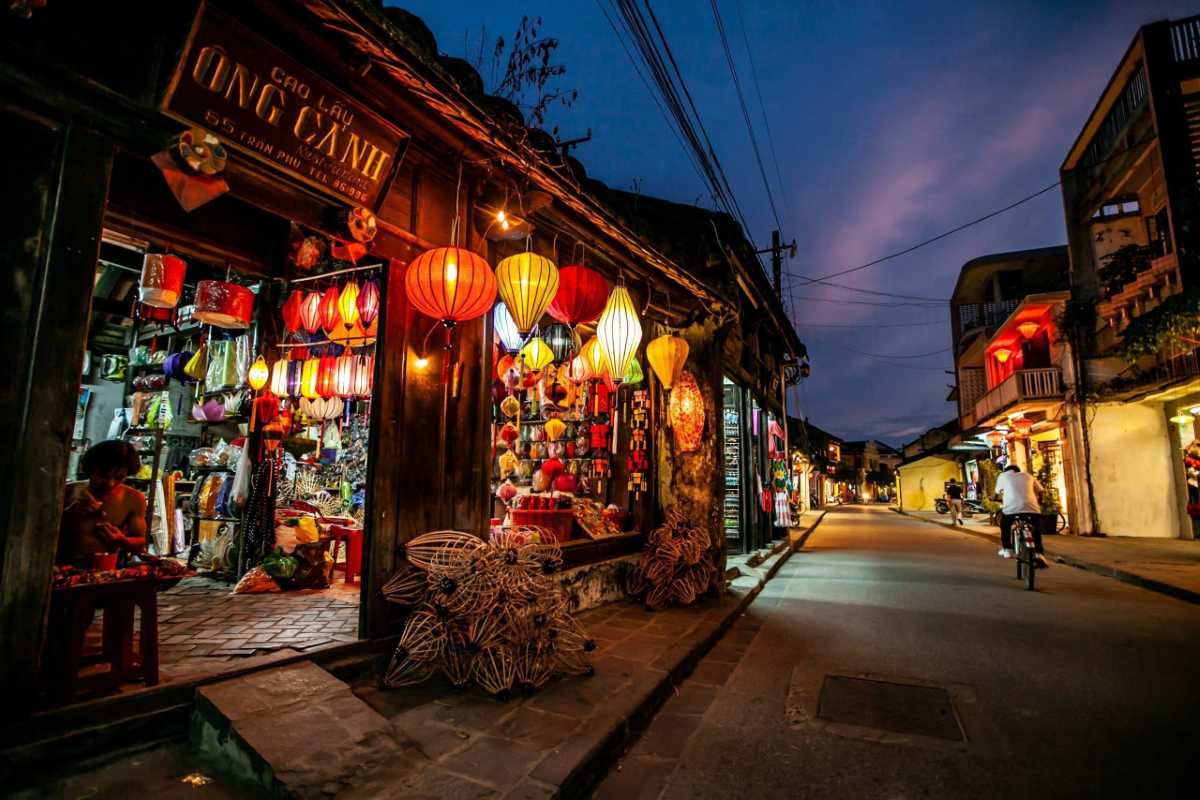
Planning Your Trip to Hoi An Ancient Town
Plan your trip to Hoi An Ancient Town with tips on the best time to visit, itinerary ideas, and packing essentials for a smooth, enjoyable experience.
Planning your visit to Hoi An Ancient Town involves understanding its climate, crafting the perfect itinerary, and packing smartly. Knowing the best time to visit Hoi An Ancient Town can enhance your experience by aligning your activities with favorable weather. Whether you have one day or several, tailored itineraries help you explore its charm at a comfortable pace. Packing the right essentials ensures you stay comfortable throughout your journey. Equip yourself with these practical travel tips to make the most of your time in Hoi An.
Prepare for your visit to Hoi An Ancient Town and enjoy every moment with thoughtful planning.
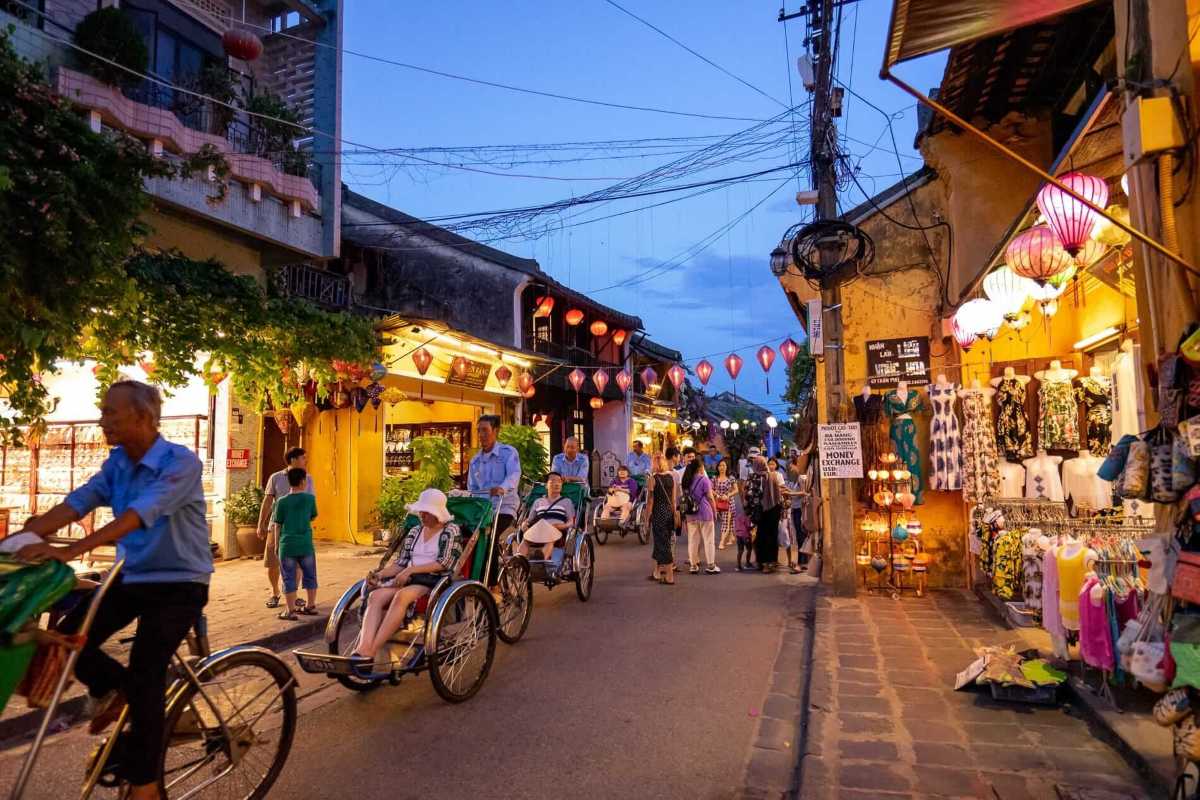
When to Go: Understanding Hoi An's Seasons
Choosing the best time to visit Hoi An Ancient Town depends on understanding its distinct dry and rainy seasons, which influence activities and the town’s atmosphere. The dry season offers warm temperatures and less humidity, ideal for outdoor exploring. Meanwhile, the rainy season brings refreshing showers that transform the town with misty mornings and glistening streets, offering a quieter, more intimate experience.
Decide the best time to visit Hoi An Ancient Town by weighing weather patterns and the experiences you seek.
Liam's Rainy Season Revelation: Why My Trip Was Still Magical
From the moment I stepped into Hoi An Ancient Town under a soft drizzle, I knew this trip would be unlike any other. The usual buzz of tourists was replaced by a gentle hush, as mist curled over the cobblestone streets, lending the town an ethereal calm that felt almost secret. Early mornings greeted me with a delicate fog, softening every corner and turning familiar alleys into mysterious pathways waiting to be discovered.
Walking through the rain-kissed streets, I noticed how the wet cobblestones glistened like jewels, reflecting the warm glow of lanterns and colorful shopfronts. Each step was accompanied by the rhythmic tapping of rain, blending seamlessly with distant conversations and the scent of damp earth. Seeking refuge, I found myself drawn into cozy cafes where the rich aroma of freshly brewed local coffee wrapped around me like a comforting blanket.
One of the most surprising joys was the spontaneous moments spent with local artisans. With fewer crowds, I had the chance to chat quietly inside traditional houses, learning about their crafts and hearing stories that rarely reach guidebooks. The rain seemed to slow time itself, inviting a deeper, more personal connection to the rhythms and heritage of Hoi An Ancient Town.
If you think the rainy season might spoil your plans, I encourage you to see it as I did—a time when the town’s softer, quieter magic comes alive. Bring a sturdy umbrella, waterproof shoes, and an open heart. Embrace the serene pace, and you’ll discover a side of Hoi An few travelers experience, leaving you with memories as rich and textured as the rain-slicked streets themselves.
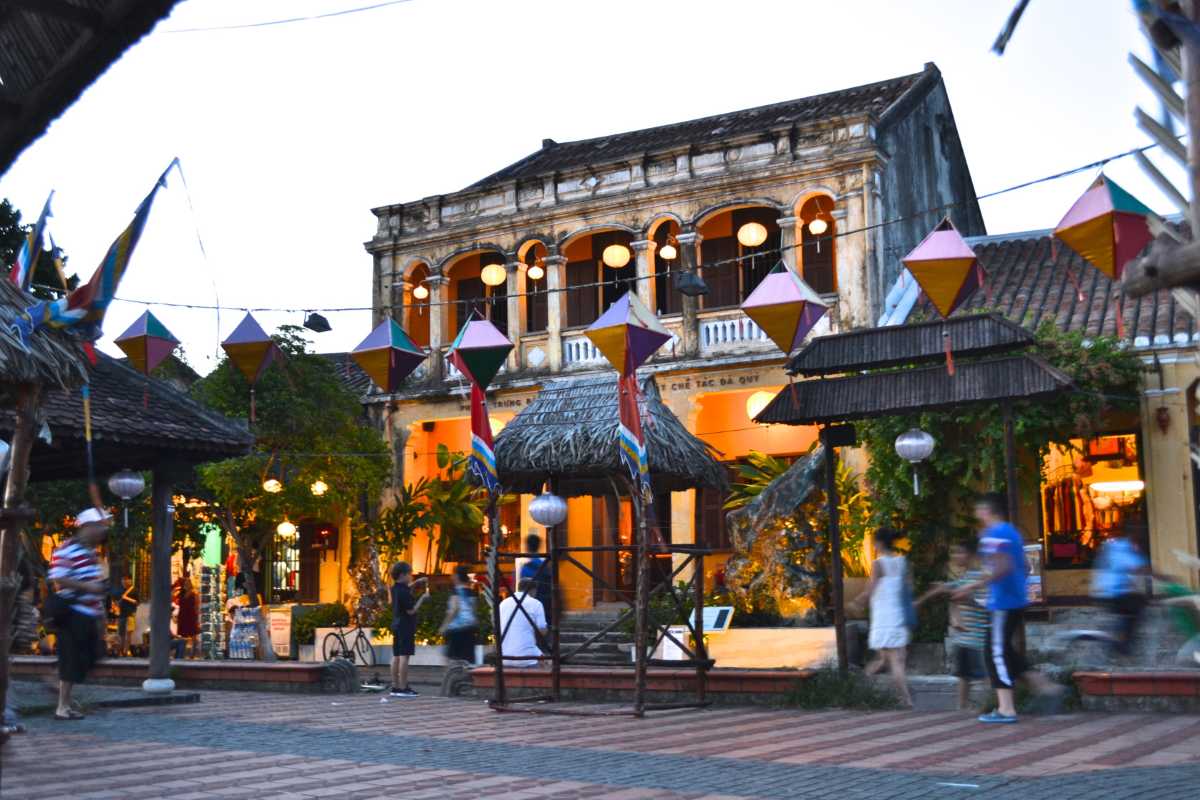
Crafting Your Hoi An Itinerary: 1, 2, 3+ Days
Planning your visit with a clear itinerary can make your experience in Hoi An Ancient Town more enjoyable and fulfilling. Whether you have only one day or several, this guide offers flexible itineraries tailored to different trip lengths and interests. From exploring historic sites to savoring local cuisine and engaging in cultural activities, there is something for everyone.
For a one-day trip, focus on must-see landmarks and a stroll through the vibrant markets. A two-day itinerary allows you to add workshops or river cruises. For three or more days, immerse yourself deeper with day trips and leisurely exploration. Use this as your blueprint for a balanced and memorable visit.
Explore popular things to do in Hoi An and build your perfect itinerary to suit your pace and preferences.
Chloe's Perfect 3-Day Itinerary: Balancing Culture, Food & Relaxation
When I arrived in Hoi An Ancient Town, I knew I wanted a trip that blended rich culture, delicious food, and moments to simply unwind. Over three days, I crafted an itinerary that let me savor the best of all worlds without feeling rushed or overwhelmed.
Day one was all about stepping back in time—wandering through iconic sites like the Japanese Covered Bridge and Tan Ky Old House. The lively markets invited me to taste street food delights, filling the air with enticing aromas that made every bite memorable. By mid-morning, I was fully immersed in the town’s heritage.
On day two, creativity took center stage with a lantern-making workshop, where I learned to craft the delicate silk lanterns that light up Hoi An’s evenings. The afternoon brought a hands-on cooking class featuring traditional dishes, offering me flavors I’d never forget. As night fell, I strolled along the riverfront, bathed in the warm glow of hundreds of lanterns reflecting on the water.
For the final day, I embraced nature with a bicycle tour through serene rice paddies and peaceful villages nearby. The fresh air and scenic views were a perfect counterpoint to the town’s historic charm. To close the day, a tranquil sunset boat ride on the Thu Bon River left me feeling calm and grateful for the experience.
I learned to beat the heat and avoid crowds by planning indoor activities during midday and starting my days early. This balance between vibrant cultural immersion and restful moments made my visit deeply rewarding. If you want a meaningful, comfortable trip, use this 3-day itinerary in Hoi An Ancient Town as your guide to a truly enriching journey.
This detailed 3 day itinerary Hoi An equips you with ideas to design your own enriching trip.
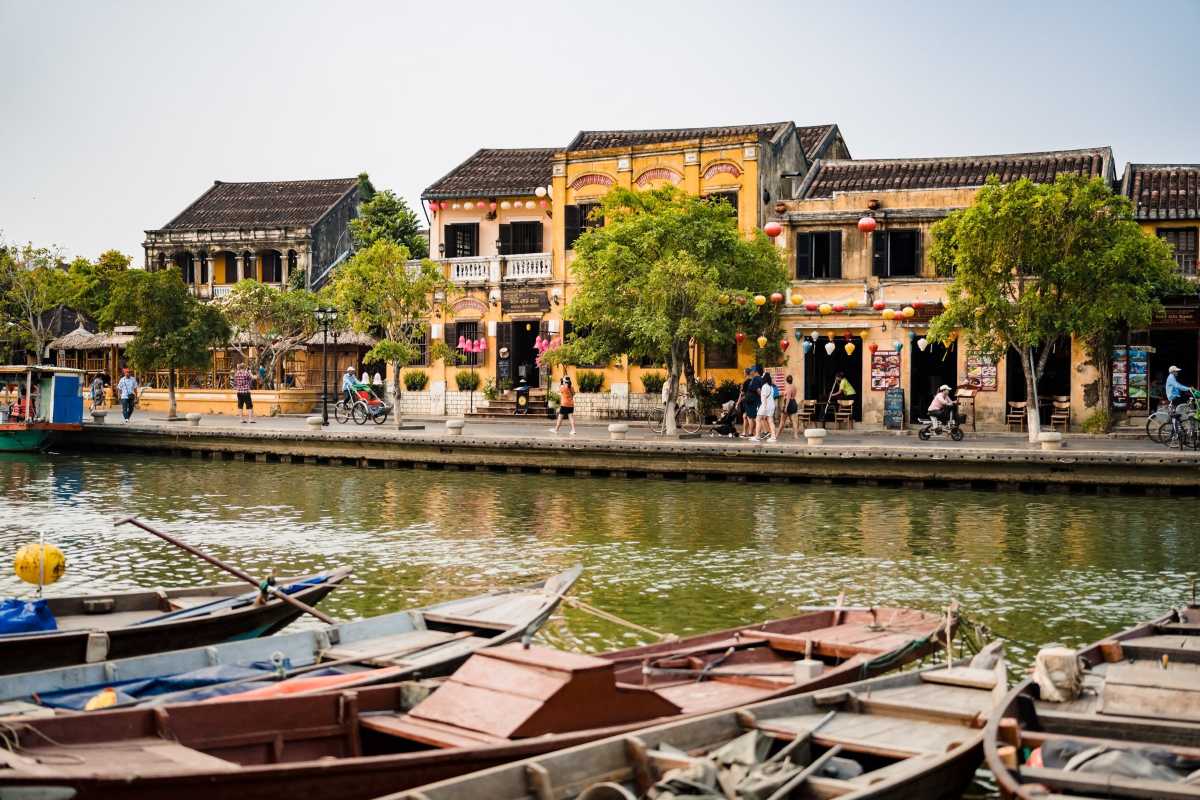
What to Pack for Hoi An: Essentials & Extras
Packing appropriately for Hoi An Ancient Town is essential to ensure comfort and enjoyment throughout your visit. The climate is warm and humid, so light, breathable clothing is key. Preparing for sudden rain showers and long walks on cobblestone streets will help you avoid common travel mishaps. This Hoi An packing list covers everything from clothing to essential accessories tailored to the local environment and planned activities.
Bring climate-appropriate clothing, sun protection, and comfortable footwear to make the most of your time in Hoi An.
Maya's Packing Regrets (and Triumphs!): What I Wish I Knew Before I Left
Packing for Hoi An Ancient Town was a learning curve for me, filled with small regrets and hard-won victories. I quickly realized that supportive walking sandals were essential—flip-flops just didn’t cut it on the uneven cobblestones and left my feet sore by midday.
The humid climate caught me off guard until I found relief in a portable, battery-operated fan that became my best travel companion during those warm, sticky afternoons. I also learned the value of quick-dry clothing; lightweight fabrics kept me comfortable after sudden rain showers, which are common here.
A small, foldable raincoat saved me from lugging bulky rain gear while staying dry and nimble. Finally, I underestimated the need for insect repellent and sunscreen—both were indispensable for outdoor activities under the tropical sun.
From my experience, packing thoughtfully means less hassle and more focus on soaking in the rich culture and stunning scenery of Hoi An Ancient Town. Don’t repeat my mistakes—prepare well, and your trip will be far more enjoyable.
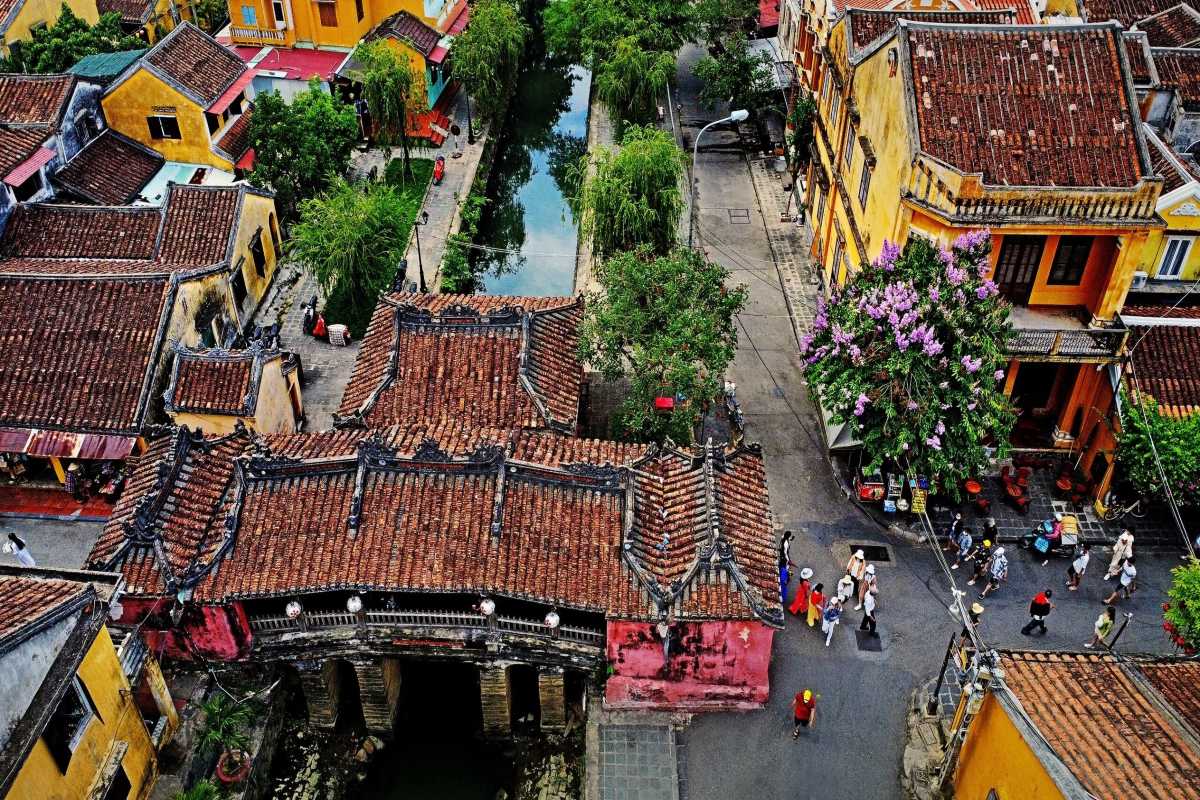
Top Attractions in Hoi An Ancient Town
Discover the top attractions in Hoi An Ancient Town, from historic landmarks to architectural marvels, with practical tips for an unforgettable visit.
Hoi An Ancient Town is home to many iconic sites that reveal its rich history and cultural heritage. Exploring these landmarks offers a window into the town’s past, from the intricate architecture to the stories etched into every corner. Planning your visits to these highlights can help you avoid crowds and gain deeper appreciation.
Explore the historic landmarks, architectural features, and traditional merchant houses that make Hoi An Ancient Town a captivating destination.

Iconic Historical Sites
Hoi An Ancient Town is renowned for its well-preserved historic sites that showcase a fusion of architectural styles and rich merchant heritage. These landmarks reveal the town’s former prominence as a Southeast Asian trading hub.
Visit the Japanese Covered Bridge, a symbol of cultural exchange; the Tan Ky Old House, showcasing merchant family history; and the distinctive Cantonese and Fujianese Assembly Halls, each with unique cultural significance.
Gain detailed insights into the history and architectural highlights of these sites to enrich your visit.
Japanese Covered Bridge
The Japanese Covered Bridge in Hoi An dates back to the 16th century and was built by the Japanese community as a connection between their quarter and the Chinese district. This pagoda-style bridge features ornate wooden carvings and is guarded by the legendary statues of a monkey and a dog, symbolizing protection and prosperity.
- Historical Origins: Built as a symbol of peace between Japanese and Chinese merchants.
- Architectural Features: Distinct pagoda roof with intricate woodwork and moss-covered stone steps.
- Visitor Tips: Visit early morning or late afternoon to avoid crowds and capture the best photographs.
- Cultural Significance: A lasting emblem of multicultural harmony in Hoi An Ancient Town.
The bridge is an essential stop for understanding the town’s diverse cultural fabric.
Tan Ky Old House
The Tan Ky Old House is a beautifully preserved merchant home that reflects the fusion of Chinese, Japanese, and Vietnamese architectural styles. It belonged to a merchant family that lived there for seven generations, with delicate features like mother-of-pearl inlays and carved wooden panels telling stories of commerce and tradition.
- Preservation Status: Maintained with original materials and traditional construction techniques.
- Architectural Highlights: Blend of Chinese tiled roofs, Japanese sliding doors, and Vietnamese wooden shutters.
- Historical Significance: Home to seven generations of the same merchant family, reflecting local history.
- Visitor Experience: Step inside to see family altars, antiques, and the intimate layout of merchant houses.
Visiting this house offers a personal glimpse into Hoi An’s rich past.
Assembly Halls (Cantonese, Fujianese, etc.)
The assembly halls in Hoi An served as cultural and religious centers for various Chinese merchant groups. They are architectural treasures featuring intricate carvings, vibrant murals, and elaborate altars honoring deities and ancestors.
- Cantonese Assembly Hall: Known for its detailed dragon carvings, red lacquer altars, and ornate roof decorations.
- Fujianese Assembly Hall: Features colorful ceramic murals and statues depicting Chinese folklore.
- Cultural Role: Functioned as gathering places for worship, meetings, and community events.
- Visitor Tips: Choose halls based on artistic preferences and opening hours for a richer experience.
These halls showcase the strong cultural imprint left by Chinese merchants in Hoi An Ancient Town.
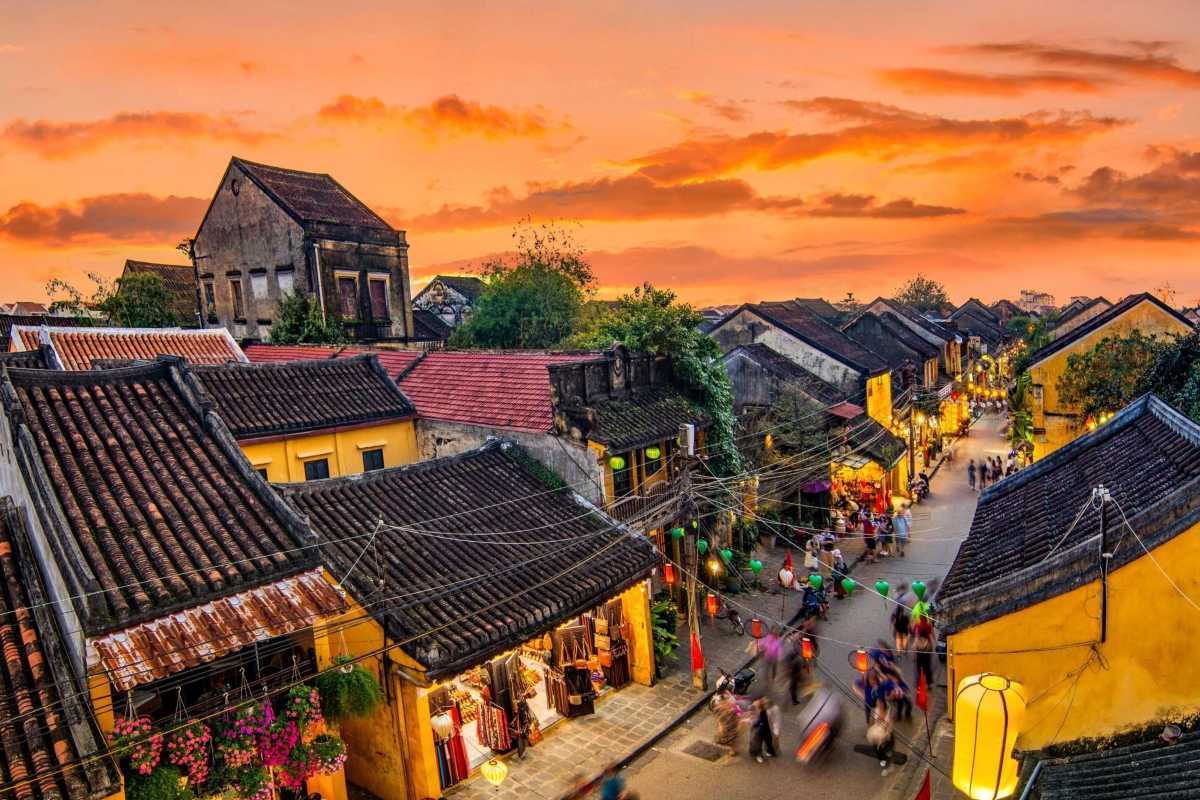
Museums and Cultural Centers
Hoi An Ancient Town offers a rich cultural tapestry beyond its streets through its museums and performance venues. These centers provide deep insights into the town’s history, trade legacy, and vibrant traditional arts. Visiting these institutions enriches your understanding and connects you to the living culture of Hoi An.
From ancient ceramics collections to captivating folk performances, explore how museums and theaters bring the town’s heritage to life.
Museum of Trade Ceramics
The Museum of Trade Ceramics in Hoi An houses an impressive collection of ancient pottery and ceramics that trace the town’s historic role in regional and international trade. Visitors can expect to see artifacts illustrating centuries of commerce, including vessels from China, Japan, and Southeast Asia.
- Collection Highlights: Ancient pottery shards, glazed ceramics, trade wares reflecting diverse influences.
- Historical Context: Exhibits explain how ceramic trade connected Hoi An Ancient Town to global markets.
- Visitor Experience: Well-curated displays offer educational insights into the economic and cultural exchanges that shaped the town.
- Practical Info: Located near the central market, ideal for combining with a walking tour of the Old Town.
This museum reveals the depth of Hoi An’s maritime trade heritage through tangible artifacts.
Hoi An Traditional Art Performance Theatre
At the Hoi An Traditional Art Performance Theatre, visitors experience live cultural performances that showcase folk music, traditional dances, and Vietnamese opera styles such as Hát Bội and bài chòi. These performances embody the town’s intangible heritage and offer an immersive cultural experience.
- Performance Types: Folk music ensembles, traditional dance troupes, Vietnamese classical opera.
- Cultural Significance: Reflect local customs, legends, and community stories passed through generations.
- Showtimes & Tickets: Regular evening shows with seating available in advance; recommended for cultural enthusiasts.
- Atmosphere: Intimate setting with authentic costumes, musical instruments, and vibrant storytelling.
Attending these performances provides a vivid connection to the soul of Hoi An Ancient Town.
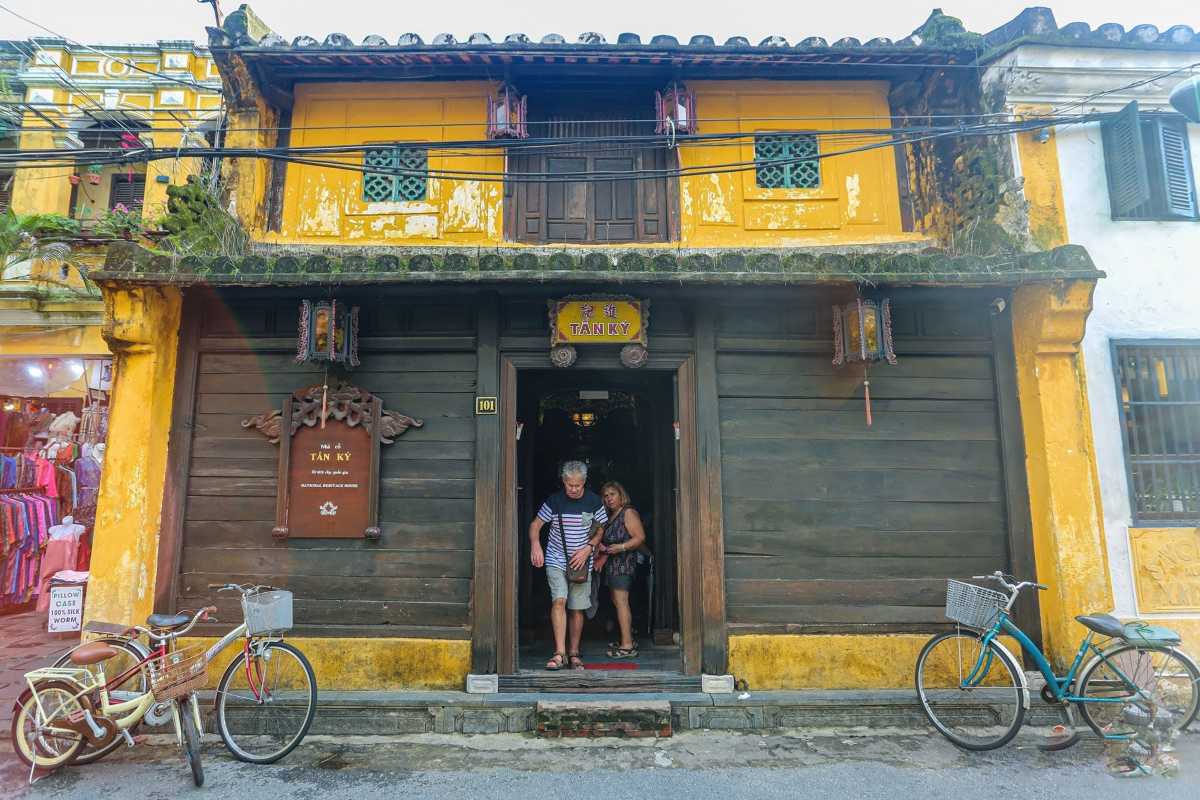
Markets and Streets to Explore
The bustling markets and winding streets of Hoi An Ancient Town are alive with vibrant colors, enticing aromas, and lively sounds. These places offer an immersive sensory journey through local life, where fresh produce, aromatic spices, and handmade crafts create a rich tapestry of daily rhythms along the Thu Bon River.
Stroll through the lively Central Market and enjoy the energy of the lantern-lit streets by night, soaking in the atmosphere that makes Hoi An truly unforgettable.
Central Market and Food Stalls
The Central Market is a sensory delight where locals and travelers gather to sample an array of fresh ingredients and street food specialties. This vibrant hub is ideal for exploring authentic tastes and discovering the culinary heartbeat of Hoi An Ancient Town.
- Popular Dishes: Cao Lau noodles, white rose dumplings, banh mi sandwiches, fresh spring rolls.
- Market Atmosphere: Buzzing with vendors selling fresh seafood, vegetables, herbs, and fragrant spices.
- Culinary Tips: Look for stalls with local queues and watch dishes prepared freshly before you.
- Shopping Advice: Engage with friendly vendors, sample before buying, and try small portions first.
Experience the market’s dynamic energy and indulge in the flavors that define Hoi An’s food culture.
Lantern-Lit Streets and Riverfront Areas
As night falls, the streets of Hoi An Ancient Town transform into a magical scene bathed in the warm glow of thousands of colorful lanterns. The riverfront along the Thu Bon River offers a romantic ambiance perfect for evening strolls and participating in traditional lantern-floating ceremonies.
- Lantern Festivals: Monthly full moon celebrations where locals and tourists float lanterns on the river for good luck.
- Nighttime Vibes: Soft lights, gentle river breezes, and street performances create an enchanting atmosphere.
- Photo Opportunities: Capture reflections of lanterns on the water and the illuminated ancient architecture.
- Leisure Activities: Enjoy riverside cafes and sample street snacks while watching the world go by.
The lantern-lit evenings highlight the charm and serenity that make Hoi An a destination like no other.
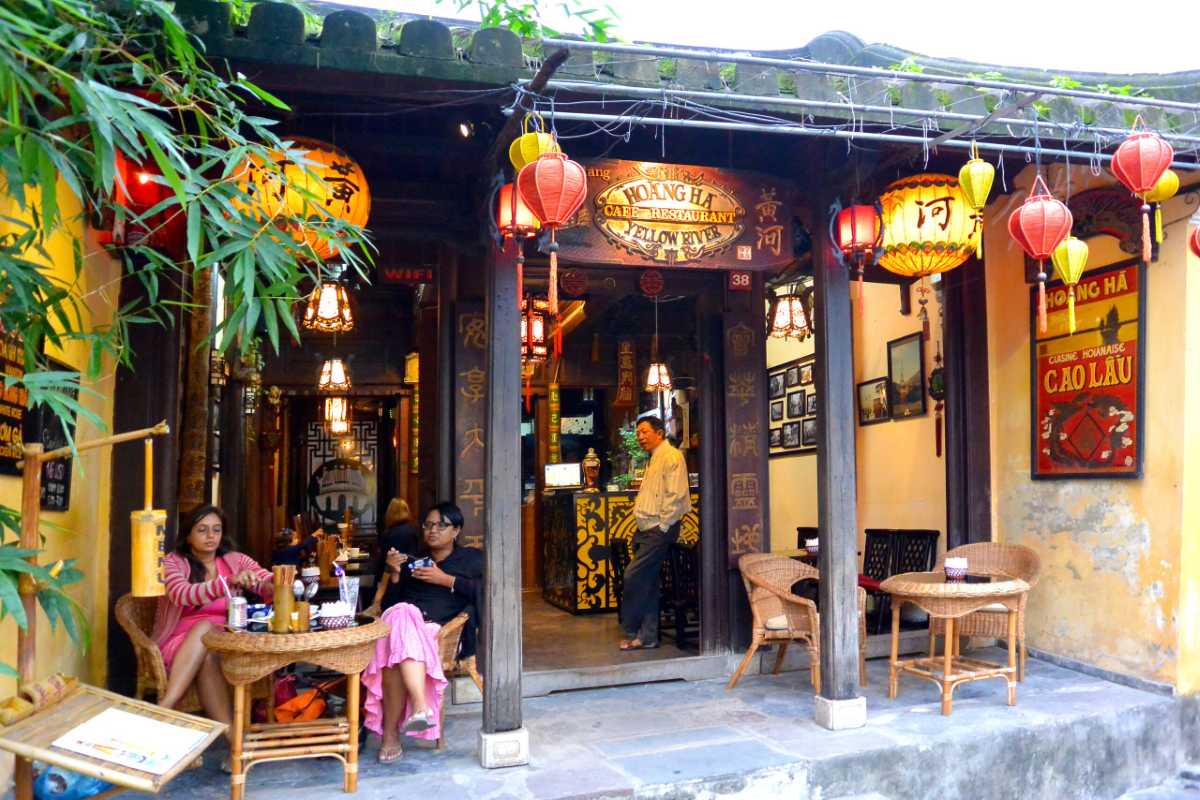
Unique Architectural Features
The Hoi An Ancient Town is renowned for its distinctive architecture, which vividly reflects its rich cultural heritage. The town’s traditional wooden shophouses and tiled roofs create a unique visual identity, blending practicality with deep symbolic meaning. Visitors gain a profound appreciation for the artistry and traditions embedded in these structures as they explore the town.
Understanding these architectural features helps travelers connect with the spirit of Hoi An and the cultural stories etched into its buildings.
Wooden Shophouses and Tiled Roofs
The traditional wooden shophouses in Hoi An display a harmonious blend of functional design and symbolic meaning rooted in Vietnamese culture.
- Narrow Facades: Designed for efficient use of limited street frontage, often opening deep into the lot.
- Yin-Yang Tiled Roofs: Curved roofs feature yin-yang patterned tiles believed to balance cosmic forces and bring harmony.
- Construction Materials: Predominantly dark wood with intricate carvings emphasizing craftsmanship.
- Practical Layouts: Multi-room interiors with courtyards allowing natural light and ventilation, essential in tropical climate.
- Cultural Significance: Roof shapes and wooden motifs often incorporate protective symbols to ward off evil spirits.
These wooden shophouses and tiled roofs exemplify the thoughtful blend of tradition and practicality in Hoi An Ancient Town.
Historic Temples and Pagodas
The historic temples and pagodas of Hoi An are masterpieces of religious architecture, rich with spiritual symbolism and artistic detail.
Temples and pagodas here often feature:
- Dragon Carvings: Intricate wood and stone carvings symbolizing strength and protection.
- Colorful Ceramic Mosaics: Brightly glazed tiles decorating roof edges and facades, depicting mythical creatures and legends.
- Woodwork: Elaborate altars, beams, and panels showcasing skilled artisanship.
- Altar Layouts: Traditional arrangements designed to honor ancestors and deities, central to community worship.
Visiting these sacred sites offers insight into Hoi An’s spiritual heritage and the cultural values of its residents.
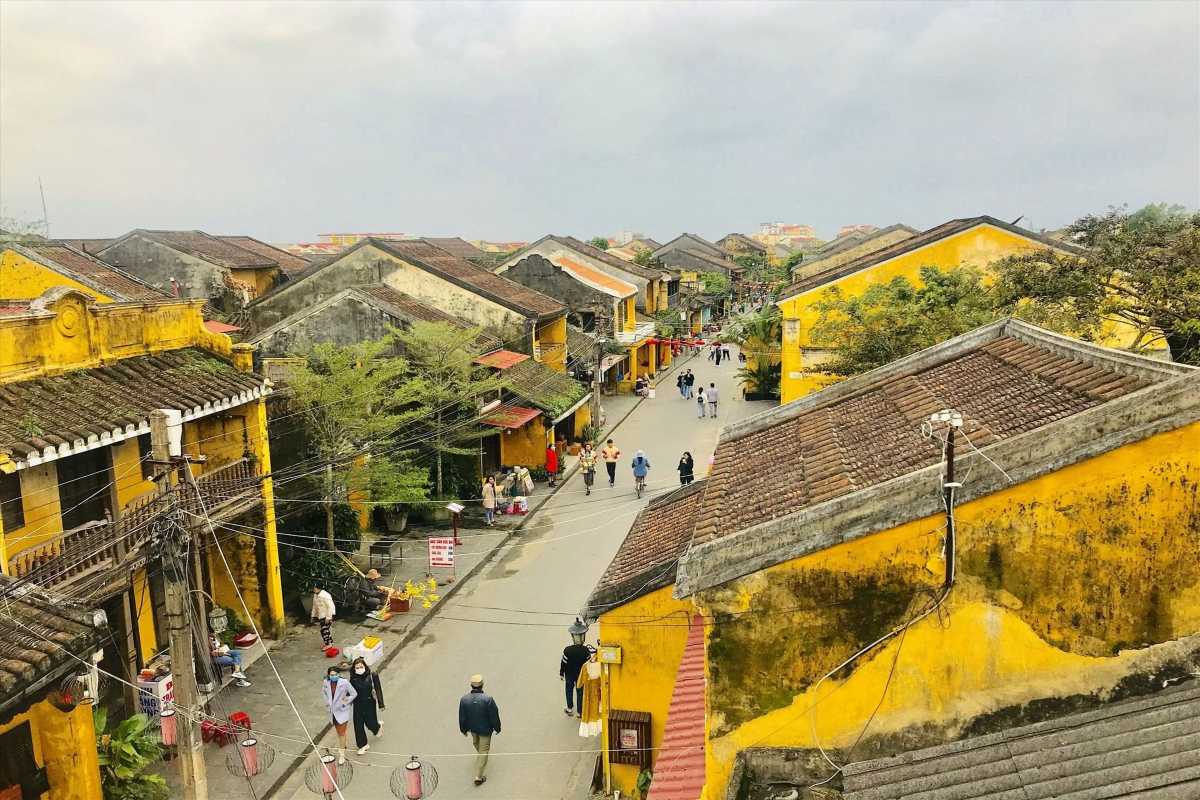
Activities and Experiences in Hoi An Ancient Town
Explore the vibrant range of activities in Hoi An Ancient Town that immerse you in its rich culture and scenic beauty. From guided walks through historic streets to engaging workshops and festive celebrations, these experiences offer memorable ways to connect deeply with this UNESCO heritage site. Planning your activities thoughtfully enhances every moment of your visit to Hoi An.
Plan your visit to Hoi An Ancient Town to enjoy its rich cultural offerings and scenic experiences.
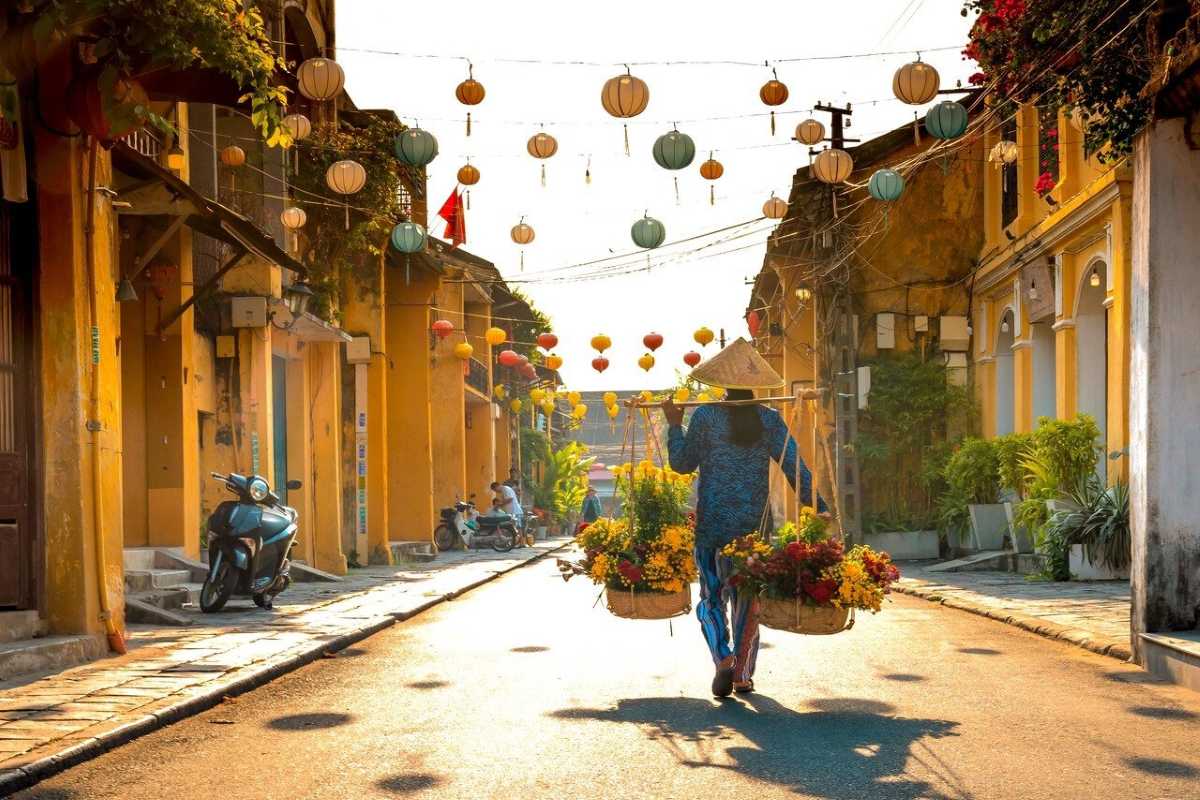
Walking and Cycling Tours
Choosing between guided walks and self-guided cycling is a fantastic way to explore Hoi An Ancient Town actively. Guided heritage walks provide rich historical and cultural insights from knowledgeable local guides, while self-guided bicycle tours allow freedom to discover hidden gems at your own pace. Both offer unique perspectives on the town and surrounding countryside.
Decide which exploration suits you best and prepare for a rewarding journey through Hoi An Ancient Town.
Guided Heritage Walks
Discover the depth of Hoi An Ancient Town through guided heritage walks that bring its history and culture vividly to life.
- Architectural Tours: Explore the unique buildings and their stories with expert guides.
- Food and Market Walks: Experience local flavors and bustling market life.
- Hidden Alleys Exploration: Visit less-known corners rich with history.
- Booking Tips: Tours are available via reputable operators; early reservations recommended.
These thematic tours offer unmatched insights and ease, perfect for curious travelers wanting a deeper connection to Hoi An.
Plan your guided walk in Hoi An Ancient Town to uncover hidden stories and cultural treasures.
Self-Guided Bicycle Routes Around Town and Countryside
Renting a bicycle in Hoi An Ancient Town lets you explore scenic routes independently and at your own pace.
- Rental Options: Available at multiple shops; costs are affordable and vary by bike type.
- Recommended Routes: Cycle through rice paddies, along the Thu Bon River, and into nearby villages.
- Safety Tips: Wear a helmet, stay alert to traffic, and follow local cycling customs.
- Time Suggestions: Early mornings or late afternoons offer cooler temperatures and stunning light.
Cycling gives you a unique, intimate experience of Hoi An’s natural beauty and rural charm.
Prepare your bike rental and plan your self-guided cycling adventure in Hoi An Ancient Town today.

Cultural Workshops and Classes
Immerse yourself in the heart of Hoi An Ancient Town by participating in cultural workshops and classes. These hands-on experiences allow you to engage directly with traditional crafts and culinary arts, enriching your visit with authentic skills and stories. Whether creating vibrant silk lanterns or mastering classic Vietnamese dishes, these activities deepen your connection to Hoi An’s heritage and offer lasting memories.
Explore lantern-making workshops and traditional cooking classes in Hoi An Ancient Town to make your visit truly unforgettable.
Lantern-Making Workshops
Join a lantern-making class in Hoi An Ancient Town to experience the creative process of crafting these iconic silk lanterns, a symbol of the town’s cultural identity.
The workshop typically begins with selecting vibrant silk fabrics, followed by carefully assembling bamboo frames that shape each lantern. You will learn traditional techniques passed down through generations, while crafting your own unique lantern to take home. Many workshops are located in the Ancient Town’s artisan quarters, offering a warm, welcoming atmosphere and the chance to interact with local craftsmen.
- Silk Selection: Choose from a variety of colorful silk fabrics, understanding their textures and qualities.
- Bamboo Frame Assembly: Learn how to bend and tie bamboo to create the lantern’s frame.
- Lantern Decoration: Add finishing touches with hand-painted designs or tassels.
- Workshop Locations: Available at reputable studios and community centers within Hoi An.
- Duration and Booking: Sessions typically last 1–2 hours; booking in advance is recommended to secure a spot.
Crafting a lantern offers a creative and tactile way to connect with Hoi An’s artistic heritage and leaves you with a meaningful souvenir.
Plan your participation in a lantern-making class in Hoi An Ancient Town and craft your own piece of local artistry.
Traditional Cooking Classes
Discover the flavors of Hoi An Ancient Town through traditional cooking classes that take you from the bustling market stalls to the kitchen stove. These immersive experiences begin with a guided market tour where you select fresh ingredients, learning about local produce and spices essential to Vietnamese cuisine. Then, under expert guidance, you prepare classic dishes such as cao lau, white rose dumplings, and fresh spring rolls.
- Market Visit: Explore Hoi An’s vibrant markets, engaging with vendors and selecting fresh, local ingredients.
- Hands-On Cooking: Learn techniques for authentic Vietnamese dishes, from ingredient preparation to cooking.
- Signature Dishes: Typical recipes include cao lau noodles, white rose dumplings, and pho.
- Meal Enjoyment: Savor the dishes you prepare in a communal setting, sharing stories and flavors.
- Class Duration and Booking: Classes last 3–4 hours; booking in advance ensures availability.
These cooking classes offer a delicious insight into Hoi An’s culinary traditions and are perfect for food lovers eager to bring home new skills.
Book a traditional cooking class in Hoi An Ancient Town to savor the flavors and stories behind each dish.
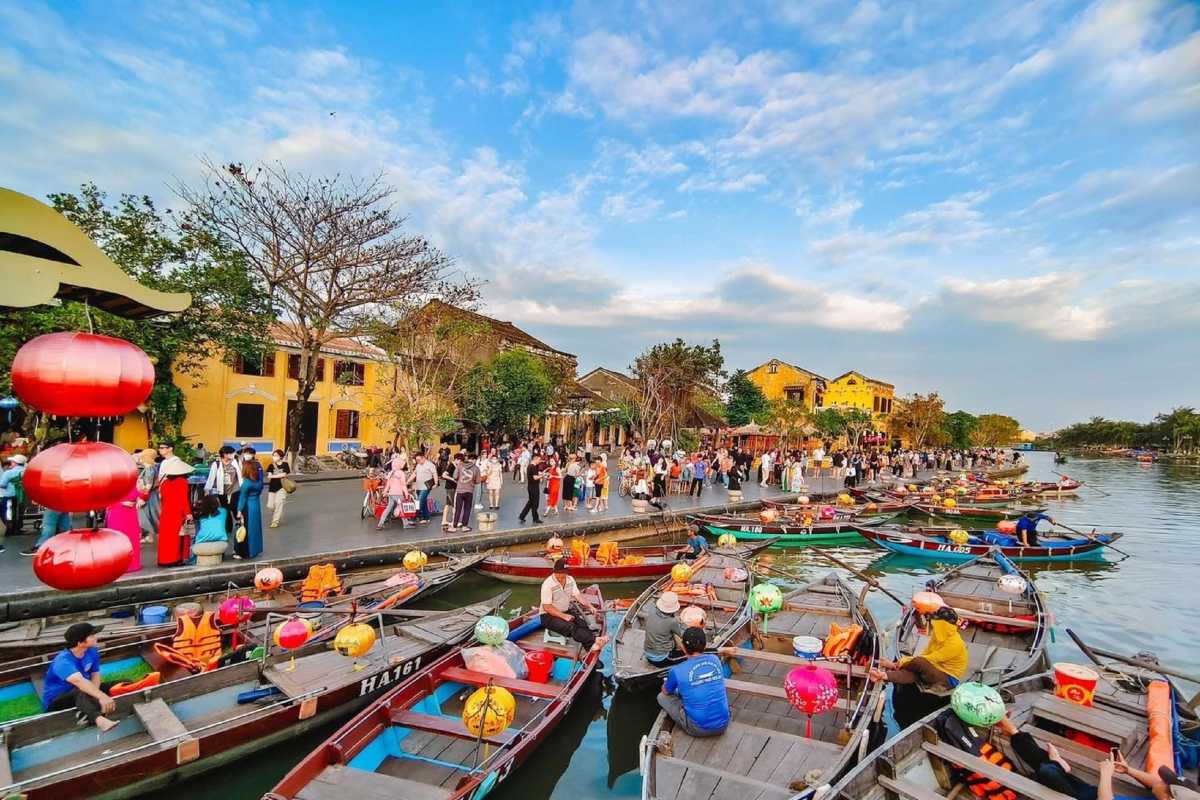
Festivals and Events
Hoi An Ancient Town is renowned for its vibrant festivals and cultural events that illuminate its rich heritage and community spirit. These celebrations offer travelers a unique window into local traditions, music, dance, and rituals. Understanding the timing and atmosphere of festivals such as the Full Moon Lantern Festival, Tet, and Mid-Autumn Festival will help you plan your visit to experience Hoi An’s magical charm at its peak.
Participate in Hoi An’s lively festivals to witness traditional performances, folk games, and the enchanting sight of floating lanterns on the Thu Bon River.
Monthly Full Moon Lantern Festival
Each month, Hoi An Ancient Town transforms during the Full Moon Lantern Festival into a glowing spectacle of light and tradition. As electric lights dim, thousands of colorful silk lanterns are lit, casting a warm, magical glow across the streets and reflecting softly on the Thu Bon River. This festival is a feast for the senses, filled with traditional music, folk games, and the serene custom of releasing floating lanterns onto the water, symbolizing wishes for peace and happiness.
- Lantern Lighting: Witness the town illuminated by myriad handcrafted lanterns, creating a vibrant, timeless atmosphere.
- River Floating Lanterns: Join locals in releasing lanterns onto the Thu Bon River, a deeply symbolic act.
- Traditional Performances: Enjoy folk music and cultural dances performed in the town squares.
- Community Involvement: Experience the warmth and participation of local residents during festivities.
- Best Time to Visit: The festival coincides with the lunar calendar’s full moon, making planning essential.
Experiencing the Full Moon Lantern Festival offers a magical insight into Hoi An’s cultural soul and is a highlight not to be missed.
Plan your trip to coincide with the Full Moon Lantern Festival in Hoi An Ancient Town for an unforgettable celebration.
Tet and Mid-Autumn Festivals
The Tet festival and Mid-Autumn Festival in Hoi An Ancient Town offer travelers a chance to witness Vietnam’s most cherished holidays celebrated with warmth and authenticity. Tet, the Lunar New Year, marks a fresh start with family gatherings, special foods, and vibrant decorations. The Mid-Autumn Festival, often called the Children’s Festival, features lantern parades, mooncakes, and communal festivities, reflecting the town’s deep cultural roots.
- Tet Festival Hoi An: Enjoy traditional foods, lion dances, and temple visits marking the Lunar New Year.
- Mid-Autumn Festival Hoi An: Experience colorful lantern displays, mooncake tastings, and children’s games.
- Special Foods: Sample festive dishes unique to each celebration, prepared with local flavors.
- Community Celebrations: Join in vibrant public events that bring locals and visitors together.
- Visitor Tips: Prepare for larger crowds and early accommodation bookings during these peak times.
Attending Tet or the Mid-Autumn Festival allows you to connect with Hoi An’s communal spirit and enjoy culturally rich, festive experiences.
Consider timing your visit to Hoi An Ancient Town during Tet or the Mid-Autumn Festival for a culturally immersive trip.

River Cruises and Evening Activities
Evenings in Hoi An Ancient Town come alive with unique experiences that let you see the town from a tranquil perspective and enjoy vibrant local culture. Taking a Thu Bon River boat ride at sunset offers serene views as the golden light dances on the water, while exploring the lively night market introduces you to tantalizing aromas, colorful crafts, and bustling energy. These activities provide memorable ways to unwind and immerse yourself in Hoi An’s enchanting ambiance.
Discover the charm of Thu Bon River boat rides and the excitement of Hoi An night market exploration to enrich your visit with unforgettable evening moments.
Thu Bon River Boat Rides at Sunset
Gliding along the Thu Bon River at sunset reveals a peaceful side of Hoi An Ancient Town. As the sun dips low, the sky blazes with warm hues that reflect off the shimmering water, creating a breathtaking backdrop for your cruise. Traditional fishing boats drift by, their nets casting gentle shadows. The lanterns that soon light the riverbanks add a magical glow, wrapping the scene in soft color and tranquility.
- Sunset Boat Rides Hoi An: Available through various local operators offering different cruise lengths and styles.
- River Scenery: Enjoy panoramic views of the Ancient Town’s rooftops and nearby countryside.
- Traditional Fishing: Watch fishermen at work, preserving age-old practices on calm waters.
- Lantern Glow: Experience the transition from daylight to lantern-lit evenings.
- Tips: Book at least a day in advance and bring a light jacket for cooler river breezes.
This serene boat ride offers a peaceful escape from busy streets and a perfect moment to connect with Hoi An’s natural beauty.
Plan your Thu Bon River sunset boat ride to experience Hoi An Ancient Town from a captivating new angle.
Night Market Exploration
The Hoi An night market buzzes with energy, aromas, and colorful displays that captivate all your senses. Stalls line the bustling streets offering everything from handcrafted souvenirs to mouthwatering street food. The air fills with the scent of grilled meats, fresh herbs, and sweet desserts. It’s the perfect place to browse for keepsakes, sample local delicacies, and soak up the lively atmosphere under glowing lanterns.
- Street Food Stalls: Sample specialties like bánh mì, cao lầu, and fresh seafood prepared on the spot.
- Souvenir Shopping: Find silk lanterns, handmade jewelry, ceramics, and artwork crafted by local artisans.
- Market Vibe: Experience a mix of locals and tourists mingling in the colorful, bustling lanes.
- Timing: Best visited after dusk when the lanterns illuminate the streets and the market reaches its peak energy.
- Tips: Carry small change, stay aware of your belongings, and try the food from vendors with long local lines for quality assurance.
Exploring the night market brings a lively close to your day and offers authentic glimpses of Hoi An’s vibrant nightlife.
Include a visit to the Hoi An night market in your itinerary for an evening full of flavor and culture.
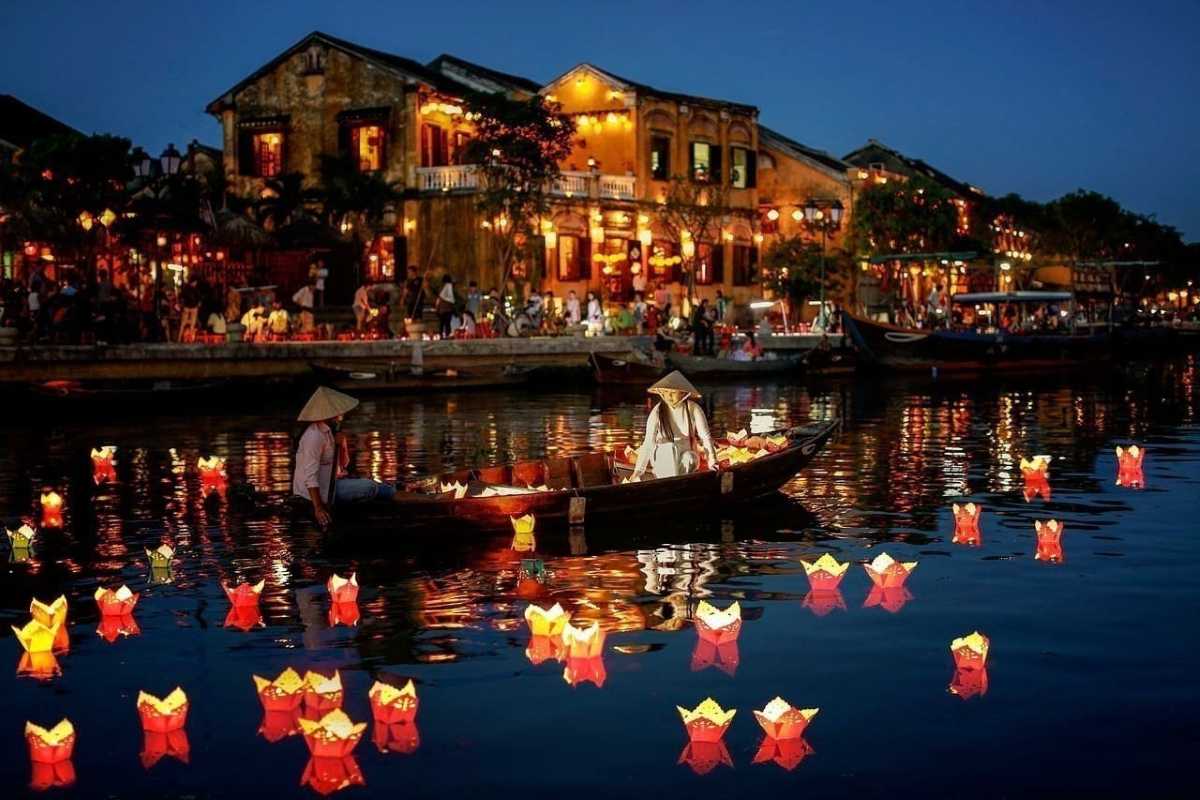
Hoi An's Culinary Journey: A Food Lover's Guide
Hoi An Ancient Town offers a rich culinary journey filled with vibrant flavors and traditional dishes that capture the heart of Vietnamese cuisine. From bustling street food vendors to authentic cooking classes, every food lover will find something memorable here. Explore signature dishes, local recipes, and the unique coffee culture that define Hoi An’s vibrant food scene.
Discover the best places to savor these specialties and plan your authentic culinary experience in Hoi An Ancient Town today.
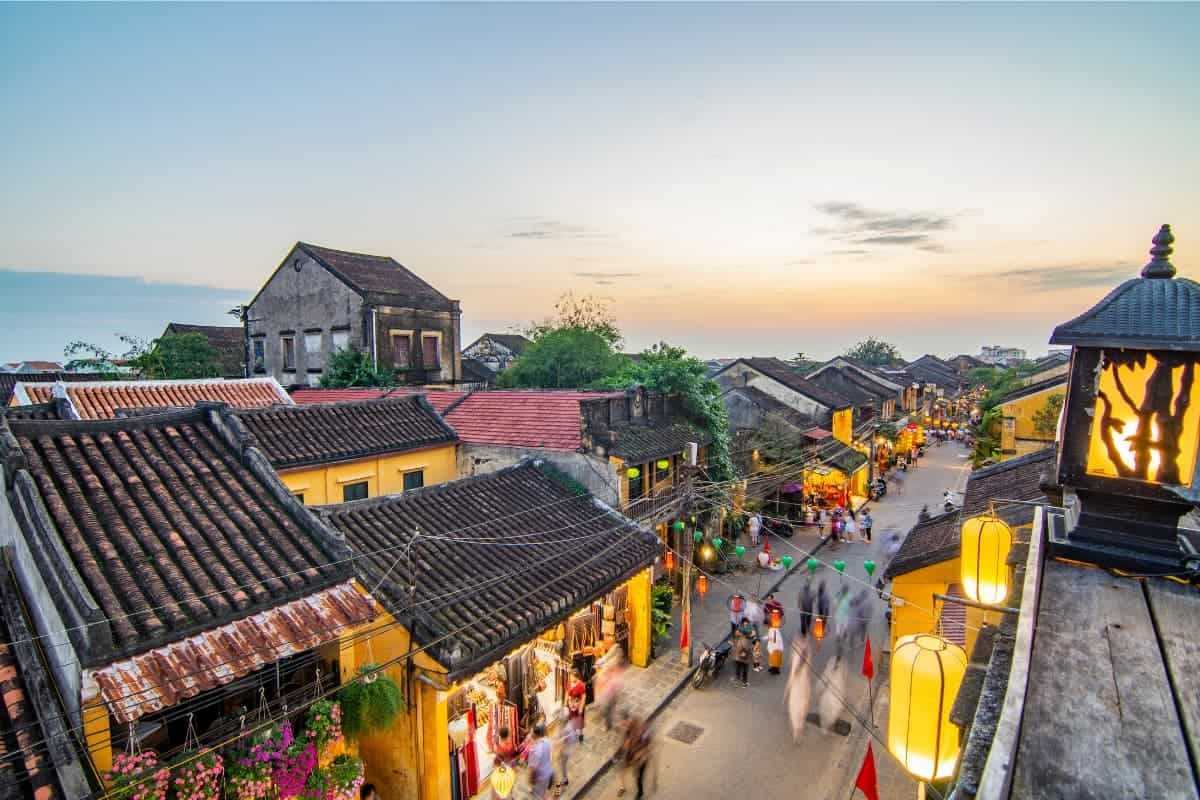
Must-Try Hoi An Specialties & Where to Find Them
Hoi An Ancient Town is famous for its unique local dishes that offer a taste of the region’s rich culinary heritage. From the chewy noodles of Cao Lau to the delicate textures of White Rose Dumplings, these specialties combine authentic flavors with centuries-old recipes. Knowing where to find the best versions of these dishes ensures a truly memorable food experience.
Explore the must-try dishes in Hoi An and discover the best eateries and street vendors to savor these authentic flavors.
Cao Lau: Daniel's Quest for the Authentic Bowl
My search for the authentic Cao Lau bowl in Hoi An led me through winding alleys and lively markets until I discovered a quiet, family-run eatery where the dish truly came alive. The thick, chewy noodles stood out, made using local water mixed with ash, giving them a unique texture unlike any other noodle I've tasted.
Paired with crispy pork rind that added a satisfying crunch and depth of flavor, the bowl was completed by a savory broth—a delicate blend of pork stock infused with subtle herbal notes. Fresh herbs on top added a fragrant brightness that balanced the rich flavors.
The atmosphere buzzed gently with the sounds of sizzling woks and chatter, while the mingling aromas of spices filled the air, making each bite a full sensory experience. This meal wasn’t just food; it was a glimpse into Hoi An’s culinary soul.
If you want to savor a genuine taste of Hoi An Ancient Town, seeking out authentic Cao Lau is a must. Plan your visit and indulge in this signature dish that tells a story with every mouthful.
White Rose Dumplings: Sophie's First Bite & Favorite Spot
I still remember the moment I took my first bite of White Rose Dumplings in Hoi An Ancient Town — it was like discovering a delicate treasure. Sitting in a cozy local café tucked away on a quiet street, the translucent dumpling skin felt soft and tender against my lips. Inside, the shrimp filling was fresh and finely chopped, offering a subtle yet savory burst of flavor. The dipping sauce brought everything together perfectly with its harmonious balance of sweet, sour, and salty notes.
Around me, the gentle murmur of other diners and the occasional clatter from the kitchen created a warm, inviting atmosphere that made the experience feel deeply authentic. Watching the staff expertly hand-fold each dumpling by the light of lanterns, I realized this wasn’t just food — it was craftsmanship passed down through generations.
What surprised me most was how the dumplings’ delicate texture contrasted with the lively energy of the café. Every bite connected me to the rich culinary heritage of Hoi An, making me appreciate the town’s culture on a new level.
If you’re planning to explore local flavors, don’t miss these gems. Look for trusted cafés where quality and atmosphere blend seamlessly, and bring your appetite ready for a sensory journey unlike any other.
Practical Tip: Visit during quieter hours—early morning or late afternoon—to savor your dumplings without the bustle, and always ask locals for their favorite spots to avoid the tourist traps.
Enjoying White Rose Dumplings in Hoi An Ancient Town is a culinary experience I’ll cherish forever, and I wholeheartedly recommend adding it to your food tour itinerary.

Hoi An Cooking Classes: From Market to Table
Hoi An cooking classes offer an immersive culinary journey, beginning with a lively market tour where you select fresh ingredients. These classes guide you through hands-on preparation of authentic Vietnamese dishes, combining traditional techniques with practical instruction. Whether you’re a novice or an experienced cook, this market to table experience deepens your appreciation for Hoi An’s rich food culture while providing delicious results. The structured format typically includes an introduction to local ingredients, step-by-step cooking guidance, and a shared meal to enjoy the fruits of your labor.
Booking a cooking class in Hoi An allows you to connect with local chefs and traditions, enhancing your trip beyond sightseeing. Choose from various classes focused on specialties like spring rolls, pho, or banh xeo to match your tastes and schedule.
Plan your culinary adventure with Hoi An cooking classes and discover the authentic flavors of Vietnamese cuisine firsthand.
Javier's Culinary Adventure: Learning to Make My Own Pho
From the moment I stepped into the bustling market of Hoi An Ancient Town, I knew this cooking class was going to be special. The air was alive with the scent of fresh herbs, spices, and vibrant vegetables, all waiting to become part of Vietnam’s iconic Pho. Picking out ingredients alongside local vendors gave me a deeper appreciation for the roots of the dish before we even stepped into the kitchen.
Back in the class, the real magic began. I learned to chop herbs finely, simmer the broth slowly for hours, and balance flavors just right — a delicate art passed down through generations. The aromatic broth, infused with star anise, cinnamon, and cloves, filled the room, making my mouth water with anticipation.
What surprised me was how much patience and care it takes to make authentic Pho, and how every element — from the fresh herbs to the tender noodles — plays a vital role. When I finally sat down to enjoy the meal I had crafted myself, the pride and satisfaction were overwhelming. It wasn’t just food; it was a connection to Vietnamese culture and tradition.
Insider Tip: Choose a class that includes a market visit — it enriches the experience and teaches you how to select the freshest ingredients. Also, wear comfortable shoes because the market stroll can be lively!
Joining a cooking Pho class in Hoi An Ancient Town is more than just learning a recipe — it’s a hands-on journey into the heart of Vietnamese cuisine that I’ll never forget.

Coffee Culture in Hoi An: Cafes & Local Brews
Vietnamese coffee culture in Hoi An is rich, vibrant, and deeply woven into daily life. From bustling street vendors to cozy cafés, coffee lovers find diverse brews to savor. Signature drinks like egg coffee, ca phe sua da (iced coffee with condensed milk), and robusta beans define the local taste. Many cafés offer charming settings, blending traditional architecture with modern comfort. Whether you prefer a lively atmosphere or a quiet corner, Hoi An’s best cafes deliver rich aromas and flavorful experiences that invite lingering moments of relaxation. Discovering this coffee culture is a delightful way to engage with local life beyond sightseeing.
Experience the warmth of Hoi An’s coffee scene and find your favorite spot to unwind.
Isabelle's Favorite Coffee Nook: A Morning Ritual in Hoi An
Every morning in Hoi An Ancient Town, I look forward to my peaceful retreat to a quiet coffee nook hidden down a narrow alley. The moment I enter, the rich, intoxicating aroma of freshly brewed coffee wraps around me like a warm hug. I order a glass of ca phe sua da, the perfect blend of strong, robust iced coffee sweetened with creamy condensed milk — a refreshingly sweet start to the tropical day.
As I sip slowly, soft morning light filters through the traditional wooden shutters, casting gentle shadows across the worn wooden tables. The delicate clinking of ice in my glass mingles with distant sounds of the waking town — street vendors setting up, bicycles rolling by, and faint chatter — creating an intimate soundtrack to my morning.
This ritual isn’t just about coffee; it’s a moment of calm and connection to Hoi An’s slower pace of life. Sitting here, I feel grounded and ready to embrace the day’s adventures with a peaceful heart.
Insider Tip: Seek out cafés tucked in quiet alleys for a more authentic and tranquil experience. Early mornings offer the best light for photography and a calm ambiance before the crowds arrive.
Make sure to include a visit to these charming coffee cafes in Hoi An in your itinerary to enjoy your own serene morning ritual.

Street Food Stalls vs. Restaurants: Decoding Hoi An's Dining Scene
Navigating Hoi An’s dining scene means choosing between vibrant street food stalls and cozy restaurants. Street food offers authentic flavors at budget-friendly prices, perfect for adventurous travelers craving quick, fresh bites. Restaurants provide more formal settings, wider menus, and comfort, suitable for relaxed meals or special occasions. Understanding local dining etiquette, including hygiene tips and polite behavior, helps you enjoy both options confidently. Whether you’re grabbing a bánh mì from a street vendor or savoring traditional dishes in a restaurant, Hoi An delivers culinary delights to satisfy every preference.
Explore both street food and restaurants in Hoi An to fully experience its rich food culture.
Ethan's Street Food Dare: Discovering the Best Banh Mi on the Go
When I arrived in Hoi An Ancient Town, I was determined to find the best bánh mì—the iconic Vietnamese sandwich that locals rave about. My quest led me to a bustling street vendor tucked between narrow alleys, where the air was thick with the aroma of freshly baked baguettes and sizzling meats. The vendor, a family-run stall, moved with practiced speed, assembling sandwiches with crisp bread, savory pork, pickled vegetables, and fragrant herbs.
The first bite was a revelation—the crunch of the baguette gave way to layers of flavor: sweet, salty, tangy, and fresh all at once. The lively street sounds and chatter around me made the experience feel authentic and alive. Initially, I was cautious about street food hygiene, but I quickly learned to trust stalls packed with locals and focused on freshly cooked ingredients.
Insider Tip: When hunting for street food like bánh mì, look for vendors with a steady local crowd and visibly clean preparation areas. Politeness and a smile go a long way in Vietnamese dining culture.
If you want to taste the true spirit of Hoi An’s street food scene, embrace the adventure and dare to try these flavorful, on-the-go delights—you won’t regret it.

Practical Visitor Information
Get clear, actionable tips on transportation, tickets, timing, and accessibility for a smooth visit to Hoi An Ancient Town.
Planning your trip to Hoi An Ancient Town involves understanding key practical details, from how to arrive to navigating the town itself. This section guides you through the best transportation options, ticket systems, ideal visiting times, and accessibility features. Equipped with this knowledge, you can confidently organize your visit and make the most of your time in Hoi An.
Discover essential tips to ease your travel logistics and enhance your experience in Hoi An Ancient Town.

How to Get There
Traveling to Hoi An Ancient Town from major hubs like Da Nang International Airport is straightforward with several transport choices catering to different preferences and budgets. Understanding these options helps you plan your arrival efficiently and comfortably.
Consider these transportation methods from Da Nang to Hoi An to find what suits your needs best.
Transportation Options from Da Nang International Airport
When arriving at Da Nang International Airport, several transport options await you:
- Taxis: Metered taxis offer direct rides, with fares averaging 300,000–400,000 VND. Fixed-price taxis may be slightly cheaper but confirm rates in advance.
- Grab Ride-Hailing App: Convenient and often more affordable than taxis; apps operate widely in Da Nang and Hoi An.
- Private Car Services: Booked in advance, these offer comfort and fixed prices, ideal for groups or families.
- Shuttle Buses: Tourist shuttle buses connect the airport and Hoi An regularly, costing about 100,000–150,000 VND with travel times around 45 minutes.
Each option varies in convenience, cost, and travel time—choose based on your budget and comfort preference.
Plan your transportation early to start your visit to Hoi An Ancient Town smoothly.
Bus and Shuttle Services
If you’re traveling from other Vietnamese cities, these options connect you to Hoi An:
- Buses from Hue: Several daily services take about 2.5 to 3 hours, with reputable operators offering comfortable rides.
- Tourist Shuttles from Nha Trang and Ho Chi Minh City: Organized shuttle services provide hassle-free transfers, often booked through travel agencies or hotels.
- Intercity Buses: Economical but slower, these buses connect major hubs to Hoi An with varying schedules.
Check schedules and book tickets ahead during peak seasons to secure your spot.
Explore transport options from cities across Vietnam to reach Hoi An Ancient Town with ease.
Local Transport Within Hoi An (Walking, Biking)
Getting around Hoi An Ancient Town is easy and enjoyable thanks to its pedestrian-friendly design. Options include:
- Walking: The compact Ancient Town encourages leisurely strolls through historic streets with many pedestrian-only zones.
- Bicycle Rentals: Widely available at affordable rates (about 20,000–50,000 VND per day), bicycles offer freedom to explore nearby countryside and river paths.
- Cyclos (Traditional Rickshaws): A fun way to experience the town with a local driver guiding you through alleys and landmarks.
- Electric Taxis: Available for longer distances or to destinations outside the Ancient Town, offering a convenient alternative.
Renting a bicycle or taking a cyclo adds local flavor to your visit and helps you cover more ground efficiently.
Choose the best local transport method to enhance your sightseeing in Hoi An Ancient Town.

Entrance Fees and Tickets
Understanding the Hoi An Ancient Town ticket system is essential for a smooth visit. The town uses a general admission ticket that grants access to several key attractions while supporting preservation efforts. Knowing where to purchase tickets and what each ticket covers helps you plan your visit efficiently and avoid surprises.
Get prepared with detailed information about entrance fees and ticket options in Hoi An Ancient Town to maximize your experience without hassle.
General Admission Ticket System
The general admission ticket for Hoi An Ancient Town is your key to exploring many of its historic sites. Here’s what you need to know:
- Coverage: The ticket allows entry to up to five designated attractions such as ancient houses, museums, and assembly halls.
- Purchase Points: Tickets are available at official ticket booths located at the town’s entrances and some attraction sites.
- Validity Period: Tickets are valid for ten days from the date of purchase, giving you flexibility to explore at your own pace.
- Preservation Fund: Part of the ticket price contributes to the maintenance and restoration of Hoi An’s heritage sites.
Buying your ticket at official booths ensures authenticity and supports conservation efforts.
Plan ahead by understanding the general admission ticket details for Hoi An Ancient Town.
Individual Attraction Fees and Passes
Some attractions in Hoi An Ancient Town require separate entrance fees beyond the general ticket. To optimize your visit and save money, consider the following:
- Separate Fees: Certain sites like special exhibitions or cultural performances may charge additional entry fees.
- Combined Passes: Combo tickets are available that bundle access to multiple popular sites at a discounted rate.
- Pricing: Individual attraction fees typically range from 20,000 to 80,000 VND depending on the site and event.
- Where to Buy: Purchase combined passes online or at selected ticket offices to avoid queues and ensure availability.
Knowing these options helps you plan your itinerary and manage your budget effectively while enjoying Hoi An’s rich cultural offerings.
Make the most of your time by exploring ticket bundles and attraction passes in Hoi An Ancient Town.

Best Time to Visit
Choosing the best time to visit Hoi An Ancient Town involves balancing pleasant weather with local events and crowd sizes. Understanding seasonal patterns helps you enjoy outdoor activities and festivals comfortably while avoiding peak tourist congestion. Consider the dry and rainy seasons alongside the festive calendar to tailor your visit.
Plan your trip to Hoi An Ancient Town by aligning with optimal weather and cultural highlights.
Weather Patterns and Dry Season Advantages
Hoi An experiences a tropical climate with distinct dry and rainy seasons. Here’s a monthly overview to help you decide when to go:
- Dry Season (February to August): Characterized by warm temperatures (25-35°C), low rainfall, and abundant sunshine, ideal for outdoor activities and exploring the town.
- Rainy Season (September to January): Marked by increased humidity and frequent showers, which can enhance the town’s atmosphere with lush greenery and quieter streets.
- Average Monthly Rainfall: Peaks in October and November, so plan accordingly if you prefer less rain.
- Sunshine Hours: Highest from March to May, providing ample daylight for sightseeing and photography.
Visiting during the dry season offers greater comfort for walking tours, cycling, and beach visits in Hoi An Ancient Town.
Festival Seasons and Crowd Considerations
Festivals in Hoi An create vibrant, culturally rich experiences but can also affect crowd levels and accommodation availability. Here’s what to expect:
- Full Moon Lantern Festival: Held monthly on the 14th lunar day, streets glow with lanterns, attracting large crowds but offering magical ambiance.
- Tet Festival (Vietnamese Lunar New Year): The most significant holiday with festive decorations and traditional celebrations, resulting in busy hotels and higher prices.
- Mid-Autumn Festival: Celebrated with mooncakes, lantern parades, and folk games, drawing both locals and tourists.
- Accommodation and Pricing: Festival periods often see spikes in hotel rates and limited availability, so early booking is recommended.
Balancing festival attendance with crowd management enhances your visit to Hoi An Ancient Town.

Accessibility and Visitor Facilities
Ensuring accessibility in Hoi An is essential for a comfortable visit. The town offers several facilities to support diverse travelers, from pedestrian-friendly areas to restrooms and visitor centers. Knowing these details helps you navigate the town safely and enjoy your time with ease. This section highlights key visitor amenities and accessibility features to prepare you for a smooth trip to Hoi An Ancient Town.
Plan your visit confidently by understanding the accessibility and available facilities in Hoi An.
Pedestrian-Friendly Zones
Hoi An has designated pedestrian zones with car-free hours that enhance safety and enjoyment for walkers and cyclists.
- Car-Free Hours: Typically in the evenings, traffic is restricted to create a calm and safe environment in the Ancient Town.
- Walking Areas: The historic streets are ideal for strolling, free from motor vehicles during these times.
- Bicycle Access: Cycling is encouraged within pedestrian zones, promoting eco-friendly transport and relaxed exploration.
These zones ensure a peaceful visit and protect the town’s heritage atmosphere.
Enjoy exploring Hoi An Ancient Town on foot or by bike during car-free hours for a serene experience.
Accessibility for Disabled Visitors
Travelers with disabilities should be aware of both challenges and accommodations in Hoi An.
- Cobblestone Streets: The uneven surfaces can be difficult to navigate; use accessible routes where available.
- Accessible Routes: Some key areas have ramps and smoother paths to facilitate wheelchair access.
- Accommodations: Certain hotels and guesthouses offer facilities catering to disabled guests; inquire in advance.
- Assistance Services: Local guides and transport options can be arranged to support mobility needs.
Being informed helps ensure a safe and enjoyable visit for all travelers.
Consider these accessibility tips when planning your trip to Hoi An Ancient Town.
Amenities Such as Restrooms and Visitor Centers
Essential visitor services in Hoi An are conveniently located to enhance your comfort.
- Public Restrooms: Found near major attractions and market areas; cleanliness varies, so carry hand sanitizer.
- Visitor Centers: Located at the town’s entrances, offering maps, information, and assistance.
- Emergency Services: Police and medical centers are accessible in the town; emergency contact numbers are posted at key points.
- Accessibility: Many facilities accommodate travelers with special needs, though availability can be limited.
Knowing where to find these amenities helps you focus on enjoying your visit.
Use the visitor centers and restrooms in Hoi An Ancient Town to make your trip hassle-free.

Beyond the Ancient Town: Day Trips & Hidden Gems
Exploring beyond Hoi An Ancient Town reveals rich day trips and hidden gems that deepen your travel experience. From the sacred My Son Sanctuary to the vibrant Cam Thanh Coconut Forest, these excursions offer unique glimpses into Vietnam’s history, culture, and natural beauty. Discover charming villages, pristine beaches, and lush landscapes that complement your visit to Hoi An.
Extend your journey by exploring the surrounding wonders of Hoi An Ancient Town and enrich your travel memories.

My Son Sanctuary: Journey to a Lost Civilization
The My Son Sanctuary near Hoi An Ancient Town is a UNESCO World Heritage site showcasing ancient Hindu temples built by the Champa Kingdom. These ruins tell stories of a once-thriving civilization through their red brick towers and intricate carvings. Tours from Hoi An offer historical insights, transport convenience, and guided exploration to maximize your visit. Early mornings or late afternoons are ideal times to avoid crowds and capture stunning photos.
Plan your visit to My Son Sanctuary for a meaningful glimpse into Vietnam’s ancient heritage.
Olivia's Spiritual Encounter at My Son: What the Guidebooks Don't Tell You
Walking through the ancient ruins of My Son Sanctuary, I was immediately enveloped by a profound sense of history and tranquility. The soft rustling of leaves above mingled with distant bird songs, creating an atmosphere perfect for reflection. My local guide’s stories of the Champa Kingdom legends and hidden temple secrets transformed the crumbling stones into living echoes of the past. Even under the midday sun’s warmth, the spiritual energy here was undeniable—inviting patience and openness to truly connect with this sacred place.
One unexpected insight was how silence amplifies the experience, allowing you to feel the heartbeat of a civilization long gone. Don’t rush—let the site’s calm rhythm guide your visit.
For a deeper connection, I highly recommend joining a guided tour of My Son Sanctuary. It’s an experience that touches the soul beyond what any guidebook can convey.

Cam Thanh Coconut Forest: Basket Boat Adventures
The Cam Thanh Coconut Forest offers a unique chance to explore a lush, tranquil ecosystem by riding traditional round basket boats. These boats glide through the winding waterways amid dense coconut groves, combining nature and local culture in one unforgettable experience. Activities include spinning rides, crab fishing, and enjoying live music played by skilled boatmen. This hands-on adventure showcases the daily life of fishermen and the harmony between people and environment.
Discover the charm of Cam Thanh Coconut Forest with a basket boat ride that blends excitement and cultural immersion.
Sam's Hilarious Basket Boat Ride: Spinning into Fun!
From the moment I stepped into the round basket boat at Cam Thanh Coconut Forest, I knew I was in for a unique adventure. The boatman skillfully spun us faster and faster, laughter bubbling up as the boat twirled on the shimmering water. Soft traditional music from the boatmen created a festive soundtrack, perfectly blending with the gentle splash of paddles. Trying my hand at crab fishing added an unexpected, playful challenge, while the cool forest breeze kept me refreshed throughout the ride. My advice? Let go of hesitation, embrace the dizzying spin, and soak in the joyous energy of this unforgettable boat ride.
If you’re seeking a fun, nature-filled outing, a basket boat ride at Cam Thanh Coconut Forest promises endless smiles and lasting memories.

Hidden Corners & Local Life: Discovering Hoi An's Authenticity
Beyond the bustling main streets, Hoi An offers quiet alleys and neighborhoods where the authentic rhythm of local life unfolds. Early mornings reveal tranquil scenes of residents setting up market stalls, preparing fresh ingredients, and starting their day with familiar routines. These hidden corners showcase Hoi An's rich cultural fabric, from lively street food stalls to serene spots framed by ancient architecture. Exploring off the beaten path allows you to connect deeply with the town’s genuine spirit and daily life.
Experience the quiet charm of Hoi An by venturing into its lesser-known streets and savoring moments of local authenticity.
Priya's Morning Stroll Off the Beaten Path: A Glimpse into Local Life
My morning stroll through the quiet backstreets of Hoi An felt like stepping into a world untouched by time. The rich aroma of street food simmering nearby mingled with the gentle chatter of vendors arranging fresh fruits and vegetables. Each rhythmic clatter—bamboo baskets, wooden carts—marked the start of daily routines carried out with care and tradition. Bathed in soft dawn light, these tranquil alleys unfolded like a living painting of community life, far from the tourist crowds. This peaceful walk revealed the genuine heart of Hoi An and offered a rare moment to savor its everyday magic.
I encourage you to take your own early stroll along Hoi An’s hidden paths to experience the warmth and authenticity of local life firsthand.

Beaches and Coastal Areas
Hoi An Ancient Town offers access to two main beaches, each with its own unique charm. An Bang Beach is lively, perfect for water sports and beach cafes, attracting travelers who enjoy an active seaside atmosphere. In contrast, Cua Dai Beach is known for its tranquility and wide sandy stretches, ideal for relaxation and quiet moments by the sea. Both beaches provide easy access from the town, making them convenient escapes to enjoy coastal beauty.
Choose An Bang Beach for vibrant activities or Cua Dai Beach to unwind in peaceful surroundings during your visit to Hoi An.

Countryside and Village Tours
The countryside around Hoi An Ancient Town invites you to explore vibrant rural life and traditional crafts. Tours to Tra Que Vegetable Village offer hands-on experiences with organic farming, allowing you to participate in planting and harvesting fresh produce. Nearby, Cam Kim Island features craft villages like Kim Bong Carpentry Village, where artisans skillfully produce woodwork and woven mats. These tours provide intimate insight into local culture and artisanal heritage.
Discover the authentic rural rhythms and artisan crafts just outside Hoi An for a meaningful cultural experience.
Tra Que Vegetable Village
At Tra Que Vegetable Village, organic farming thrives through sustainable methods that have been passed down for generations. Visitors can:
- Participate in planting and harvesting fresh vegetables using traditional tools.
- Learn about natural fertilization and pest control techniques.
- Enjoy a farm-to-table experience with meals prepared from freshly picked produce.
This immersive farming experience deepens your connection to Hoi An’s culinary traditions and rural life.
Experience the joy of hands-on farming at Tra Que Vegetable Village to enrich your Hoi An Ancient Town visit.
Cam Kim Island Craft Villages
The craft villages on Cam Kim Island showcase traditional artisan skills that remain vibrant today. Highlights include:
- Kim Bong Carpentry Village: Explore workshops crafting furniture and intricate wood carvings.
- Mat weaving workshops where visitors can see and try weaving techniques.
- Friendly artisans eager to share their craft stories and demonstrate techniques.
Visiting these villages offers an authentic glimpse into local craftsmanship and cultural heritage near Hoi An.
Plan a visit to Cam Kim Island to support and learn from skilled artisans during your stay in Hoi An Ancient Town.

Day Trips and Adventure Activities
Beyond the historic center of Hoi An Ancient Town, adventure seekers can enjoy active outdoor excursions that showcase the region’s natural beauty and cultural richness. From cycling through scenic rice paddies to tranquil boat trips on the Thu Bon River, these activities offer immersive experiences combining exercise, exploration, and relaxation. Whether you seek the rhythm of rural life or the calm of river waters, the area around Hoi An has engaging options to extend your journey beyond the town’s streets.
Discover exciting cycling routes near Hoi An and choose from varied boat trips on the Thu Bon River to make your visit unforgettable.
Cycling Routes Outside Town
Cycling offers a refreshing way to explore the countryside around Hoi An Ancient Town. Popular routes include:
- Scenic paths through lush rice paddies framed by towering palm trees.
- Opportunities to see water buffalo grazing and traditional farming in action.
- Stops in quiet villages for authentic interactions with locals and markets.
- Flat, easy terrain suitable for riders of all levels.
- Bicycle rental shops conveniently located in town with reasonable rates.
Prepare for a day of active exploration and cultural connection by cycling the peaceful routes surrounding Hoi An.
Plan your cycling adventure around Hoi An for a vibrant blend of nature and local life.
Boat Trips on the Thu Bon River (Extended)
The Thu Bon River offers diverse boat trips that cater to different tastes and schedules. Options include:
- Leisurely sunset cruises providing stunning views of the river bathed in golden light.
- Fishing excursions where you can learn traditional techniques from local fishermen.
- Longer explorations to less-frequented islands, revealing hidden ecological and cultural spots.
- Small group tours with knowledgeable guides who share stories about the river’s history and community.
Experience the serene beauty of the Thu Bon River while engaging with its vibrant ecosystems and local traditions.
Choose the perfect boat trip on the Thu Bon River to enrich your Hoi An Ancient Town visit.

Hoi An's Famous Tailors: Getting Custom Clothing Made
Getting custom clothing in Hoi An is a rewarding experience that requires understanding the process to ensure quality and satisfaction. Start by choosing from a wide range of fabrics, including silks, cottons, and linens, which tailors will help you select based on your needs and preferences. After fabric selection, expect a detailed design consultation where you discuss styles, cuts, and details. Precise measurements follow, often with multiple fittings to ensure the perfect fit. Communication with your tailor is key; be clear about your expectations and schedule to avoid rushing. Finally, your garment is carefully crafted and delivered on time, ready to wear.
Prepare for your visit to Hoi An tailors by knowing these steps, which help you avoid common pitfalls and ensure a personalized wardrobe addition.
Aiden's Bespoke Suit Experience: From Fabric Choice to Final Fitting
My bespoke suit journey in Hoi An started with an exciting yet overwhelming selection of fabrics. Vibrant silks, sturdy cottons, and luxurious linens all vied for attention under the tailor’s careful guidance. Each choice felt personal, knowing the fabric would shape my final look. The tailor took meticulous measurements, noting every detail to ensure a perfect fit. Over several fittings, I openly shared my preferences, adjusting collar height and sleeve length until the suit felt just right. The warm, welcoming workshop atmosphere and friendly banter helped ease my nerves throughout the process. Wearing my finished suit—crafted from my chosen fabric—brought a deep sense of pride and comfort, a testament to the skill and patience invested.
From this experience, I learned that clear communication and patience are key when getting clothes tailored in Hoi An. Take your time and enjoy the journey toward a truly personalized garment.

Local Crafts & Souvenirs: What to Buy & Where
When shopping for souvenirs in Hoi An, seek out authentic crafts that reflect the town’s rich cultural heritage. Popular items include vibrant silk lanterns, delicately handcrafted ceramics, and intricate wood carvings, each embodying traditional artistry. Avoid mass-produced goods that lack craftsmanship. Trusted shopping areas include the central market and specialized artisan workshops where quality and authenticity are guaranteed. Look for products made by local artisans to support the community and bring home meaningful mementos. Knowing where to shop and what to choose ensures a rewarding souvenir experience in Hoi An.
Grace's Lantern Shopping Spree: Finding the Perfect Keepsake
My lantern shopping spree in Hoi An was truly a feast for the senses. As I wandered the softly lit streets, thousands of colorful lanterns glowed overhead, casting warm hues on the ancient walls. Each lantern was a work of art—silk stretched delicately over bamboo frames, painted with unique patterns and vibrant colors that told stories of tradition. Picking the perfect one took patience, as I weighed each design and color. Packing these fragile treasures for the journey home was a challenge; I learned to wrap them carefully in soft clothes to protect their delicate bamboo frames. This experience gave me more than souvenirs—it left me with a beautiful, glowing reminder of Hoi An’s enchanting charm.
If you plan to shop for lanterns in Hoi An, take your time choosing and pack them with care for safe travel.

Bargaining Etiquette: Tips for Shopping Like a Local
Mastering bargaining in Hoi An markets is essential for a respectful and enjoyable shopping experience. Approach negotiations with politeness and patience, understanding that friendly dialogue is appreciated. Begin by offering a price lower than your maximum budget but avoid insulting offers. Remember that fixed-price stores do not welcome bargaining, so respect their policies. Smile and maintain a calm demeanor throughout to foster goodwill. Knowing local shopping etiquette enhances your chances of fair deals while honoring cultural norms in Hoi An.

Staying in Hoi An: Accommodation Guide
Choosing where to stay in Hoi An Ancient Town greatly influences your travel experience. Whether you prefer the immersive charm of the town center, tranquil riverside resorts, or authentic homestays, each option offers unique benefits and considerations. This guide helps you find the best fit for your preferences and budget, ensuring your visit to Hoi An Ancient Town is comfortable and memorable.
Explore lodging options that suit your style and make the most of your time in this enchanting destination.

Ancient Town Hotels: Immersive & Convenient
Staying within Hoi An Ancient Town places you steps away from historic sites, markets, and vibrant streets. Boutique hotels and heritage guesthouses offer authentic ambiance, blending modern comfort with traditional architecture.
Pros:
- Immediate walkability to attractions and dining
- Rich historical ambiance enhancing your cultural immersion
- Unique boutique hotels featuring traditional design elements
Cons:
- Potential noise from busy streets at night
- Slightly higher price points compared to outskirts
Choosing a hotel in the Hoi An Ancient Town means waking up in the heart of history, ready to explore at your own pace. Consider your priorities when booking for the best experience.
Plan your stay in Hoi An Ancient Town to maximize convenience and atmosphere.
Noah's Boutique Stay: Waking Up to Ancient Charms
Waking up in my boutique hotel in Hoi An Ancient Town felt like stepping into a quiet world apart from the bustling streets outside. The soft morning light filtered gently through wooden shutters, casting warm patterns across the room. I could hear the faint murmur of early risers and the distant flutter of birds, creating a peaceful soundtrack to start my day.
From the moment I stepped into the hotel’s courtyard, I sensed the perfect blend of history and comfort. The delicate scent of blooming flowers mixed with the subtle aroma of fresh linen. Every detail, from the carved wooden furniture to the cool stone floors, spoke of craftsmanship rooted in tradition yet designed for modern ease.
Throughout my stay, I enjoyed wandering just steps from lively markets, ancient temples, and the tranquil Thu Bon River. Returning to my room each evening, the calm courtyard felt like a private sanctuary where I could reflect on the day’s discoveries. The staff’s warm hospitality made me feel truly welcomed, adding a personal touch that transformed my lodging into part of my journey.
- Historic charm meets modern comfort for a uniquely immersive stay
- Quiet courtyards provide restful escape amid the town’s energy
- Ideal location close to Hoi An’s cultural and culinary highlights
If you want to experience Hoi An Ancient Town beyond the usual tourist path, choosing a boutique hotel is more than just accommodation—it’s an invitation to live the town’s timeless atmosphere every day of your visit. I can’t recommend it enough for anyone seeking both immersion and tranquility.

Riverside & Beach Resorts: Relaxation & Views
For travelers seeking tranquility away from the lively streets of Hoi An Ancient Town, riverside and beach resorts offer serene retreats with stunning views and premium amenities. These accommodations provide spacious rooms, infinity pools, private beach access, and spa facilities, ensuring a restful stay while still being conveniently connected to town.
- Infinity pools overlooking the Thu Bon River or ocean
- Private beach access for peaceful coastal relaxation
- Shuttle services and bicycle rentals for easy transport to the Ancient Town
These resorts balance luxury and calm, giving you a chance to unwind fully while exploring Hoi An Ancient Town nearby. Consider your preference for quiet comfort and convenience when selecting your lodging.
Relax at a riverside or beach resort and enjoy peaceful views just minutes from Hoi An Ancient Town.
Amelia's Peaceful Riverside Retreat: My Escape from the Crowds
From the moment I arrived at the riverside resort near Hoi An Ancient Town, I felt the tension of the busy streets begin to fade. Mornings became my favorite time, sitting by the infinity pool with a warm cup of coffee in hand, watching as the mist gently lifted off the Thu Bon River. The soft rustle of the river breeze and the distant calls of birds created a serene soundtrack that contrasted beautifully with the vibrant energy of the town just minutes away.
Each day, I balanced peaceful relaxation with the excitement of exploration. The shuttle to the town center was smooth and hassle-free, so I could easily dive into Hoi An’s bustling markets, ancient architecture, and lively street food scenes, knowing a quiet retreat awaited me afterward. This rhythm of calm mornings and vibrant afternoons made my stay feel both luxurious and grounded.
- Scenic river views that soothe the soul
- Relaxing poolside moments with nature’s gentle sounds
- Convenient shuttle service connecting me to Hoi An Ancient Town
For travelers wanting to escape the crowds without missing out, a riverside resort near Hoi An Ancient Town offers the perfect blend of tranquility and accessibility. It was exactly the peaceful haven I needed to recharge while staying connected to the town’s magic.

Homestays & Guesthouses: Authentic Local Living
For travelers seeking an authentic experience on a budget, homestays and guesthouses in Hoi An offer warm hospitality and a chance to connect with local life. Staying with a host family means enjoying home-cooked meals and insider tips, creating a personal and memorable visit.
- Local hospitality that fosters genuine cultural exchange
- Home-cooked meals featuring traditional recipes
- Affordable lodging options with intimate, family-run atmospheres
While these accommodations may lack some resort luxuries, they provide invaluable insights into daily Vietnamese life. Choosing a homestay or guesthouse deepens your connection to Hoi An beyond typical tourist experiences.
Experience Hoi An’s true spirit by staying in a local homestay or guesthouse for authentic warmth and cultural immersion.
Leo's Family Homestay: A Glimpse into Vietnamese Hospitality
Leo’s stay at a family-run homestay in Hoi An was filled with warmth and discovery. Each morning began with shared breakfasts featuring local dishes, while evenings brought lively conversations with hosts about village life. Leo learned simple Vietnamese phrases and even joined in preparing traditional meals. The family’s insider tips helped him explore hidden corners of Hoi An away from tourist paths.
- Warm, welcoming hosts creating a home-like atmosphere
- Opportunities for cultural immersion through shared meals and activities
- Personalized recommendations enhancing the travel experience
Leo’s story shows how homestays offer not just lodging but lasting connections and authentic memories.
Choose a homestay in Hoi An to experience heartfelt hospitality and local culture firsthand.

Insider Tips and Local Insights
To truly experience Hoi An Ancient Town beyond the usual tourist paths, tap into local insights that enhance your visit. Discover the best ways to avoid crowds and capture stunning photos while honoring local customs.
- Visit early mornings around sunrise for soft light and peaceful streets
- Explore quiet alleys away from main tourist routes for authentic scenes
- Capture the magical lantern-lit evenings along the riverfront
- Dress modestly at temples: cover shoulders and knees to respect local traditions
- Always ask permission before photographing people to show respect
These insider tips help you enjoy Hoi An Ancient Town thoughtfully, making your trip richer and more memorable.
Plan your visit to Hoi An Ancient Town with these insider strategies to capture its beauty respectfully and enjoy a genuine cultural experience.
Best Times for Photography and Avoiding Crowds
Capturing the charm of Hoi An Ancient Town requires timing and location awareness. Here are optimal moments and spots for memorable photography with fewer people around:
- Sunrise (5:30–7:00 AM): soft natural light and empty streets perfect for architecture shots
- Late evening (7:00–9:00 PM): glowing lanterns illuminate the town and riverbanks
- Quiet alleys such as Tran Phu and Nguyen Thai Hoc streets offer peaceful backdrops
- Early weekdays often see fewer tourists than weekends or holidays
Plan your photo outings around these times and locations to enjoy serene, crowd-free moments.
Use these photography tips to capture the authentic atmosphere of Hoi An Ancient Town without the crowds disrupting your view.
Respecting Local Customs and Heritage Sites
Showing respect for Hoi An’s traditions and sacred places enriches your visit and honors local culture. Keep these guidelines in mind:
- Dress modestly when entering temples: cover shoulders and knees
- Lower your voice and avoid loud conversations near religious sites
- Request permission before photographing locals, especially inside homes or rituals
- Refrain from touching altars or sacred objects
- Follow posted rules and guidance from site staff
Respectful behavior preserves the dignity of heritage sites and fosters positive interactions with residents.
Respecting local customs during your trip to Hoi An Ancient Town helps maintain its cultural richness and ensures a meaningful experience.

Dining and Culinary Experiences (General Tips)
Finding authentic dining spots in Hoi An can elevate your travel experience. Here are practical tips to enjoy genuine local flavors and avoid tourist traps:
- Look for eateries with long queues of locals — a good sign of quality and authenticity
- Ask your homestay hosts for trusted recommendations beyond popular guides
- Explore small street food stalls serving traditional recipes passed down generations
- Avoid restaurants with overly flashy menus or aggressive staff targeting tourists
- Try local specialties in humble settings to savor true flavors
These strategies help you discover authentic dining Hoi An experiences that nourish both body and spirit.
Use these tips to confidently find the best local eateries in Hoi An and enjoy meals that reflect the town’s rich culinary heritage.
Must-Try Local Dishes and Where to Find Them (Reiteration with practical angle)
When craving authentic tastes in Hoi An, prioritize these iconic dishes and trusted spots:
- Cao Lau: seek vendors known for thick noodles and savory broth, often found near the Ancient Town market
- White Rose Dumplings: try at family-run cafes famed for delicate handmade wrappers
- Banh Mi: popular street stalls where locals line up for freshly baked bread and fillings
- Mi Quang: noodle soups served with fresh herbs at roadside eateries
- Local seafood dishes: small riverside restaurants offer fresh catches cooked with regional spices
Check for food queues and clean preparation areas to ensure a quality meal.
Trust these practical recommendations to savor the best must-try dishes Hoi An offers, far from tourist gimmicks.

Shopping and Souvenirs (General Tips)
Shopping in Hoi An offers unique opportunities to find authentic crafts while respecting local traditions. Here are practical tips to help you shop wisely:
- Focus on stores and stalls showcasing handcrafted items made by local artisans
- Avoid mass-produced souvenirs that lack cultural significance or quality
- Inspect products carefully for craftsmanship and material authenticity
- Support family-run businesses to help sustain traditional crafts
- Be respectful and polite when negotiating prices to honor local customs
These guidelines will help you navigate shopping tips Hoi An confidently and ethically.
Embrace these smart strategies to acquire meaningful souvenirs that truly reflect authentic crafts Hoi An.
Authentic Crafts vs. Tourist Goods
Distinguishing genuine handmade crafts from tourist trinkets is key to responsible shopping:
- Handmade items typically show slight imperfections reflecting human touch, unlike uniform mass production
- Authentic crafts use natural materials like silk, bamboo, or local wood instead of plastic or synthetic alternatives
- Look for artisan signatures or shop certifications endorsing local craftsmanship
- Ask about the crafting process to learn and appreciate cultural significance
- Choose purchases that support sustainable livelihoods and preserve heritage
Making these choices ensures your souvenirs are valuable keepsakes and ethical acquisitions.
Bargaining Tips for Markets
Master respectful bargaining in Hoi An markets with these practical tips:
- Start with a polite greeting and smile to build rapport before negotiating
- Offer a price lower than your maximum but reasonable enough to encourage counteroffers
- Avoid aggressive haggling or insulting comments; maintain friendly tone throughout
- Recognize fixed-price stores where bargaining is inappropriate to respect business policies
- Be prepared to walk away if the price doesn’t meet your budget, often prompting better offers
Following these tips helps you negotiate confidently while honoring shopping etiquette Vietnam and fostering positive interactions.

Safety and Health Tips
Staying safe and healthy is essential when visiting Hoi An Ancient Town. Follow these key tips to ensure a worry-free trip:
- Drink plenty of bottled water daily to stay well hydrated in the tropical climate
- Use high-SPF sunscreen and wear a hat to protect against strong sun exposure
- Avoid walking in direct sunlight during peak afternoon hours when UV rays are strongest
- Keep your valuables secure by using hotel safes and carrying only necessary cash
- Use ATMs in well-lit, secure locations and remain alert for petty theft
- Always keep a copy of your passport separate from the original for emergencies
These safety tips Hoi An and health advice Vietnam travel will help you enjoy your visit with confidence and comfort.
Staying Hydrated and Sun Protection
Proper hydration and sun care are vital for your health in Hoi An:
- Always carry bottled water and sip regularly to prevent dehydration
- Apply sunscreen with at least SPF 30 before heading outdoors and reapply every two hours
- Wear lightweight, breathable clothing and a wide-brimmed hat for added protection
- Seek shade during midday when the sun is strongest to avoid heat exhaustion
- Use sunglasses to protect your eyes from UV rays
Following these sun protection tips Hoi An and hydration habits keeps you energized and safe.
Managing Money and Valuables
Keep your finances and belongings secure with these practical tips:
- Use ATMs located inside banks or reputable hotels to avoid scams
- Carry only the cash you need for the day; leave the rest secured in your accommodation
- Be mindful of your surroundings when handling money or using mobile payment apps
- Keep your passport and important documents in a hotel safe or secure travel pouch
- Stay vigilant in crowded areas to prevent pickpocketing and report suspicious activity promptly
Adopting these money safety tips Vietnam and valuables management practices ensures peace of mind during your trip to Hoi An Ancient Town.

Conservation and Sustainable Tourism
Preserving the charm and cultural heritage of Hoi An Ancient Town requires ongoing effort and mindful tourism. Travelers can play a key role in supporting conservation efforts and embracing sustainable tourism practices that protect the town’s environment and traditions. Responsible travel in Hoi An ensures this unique heritage thrives for future generations.

Ongoing Preservation Efforts
Hoi An Ancient Town follows strict regulations and community initiatives that safeguard its historic character:
- Building modifications are tightly controlled to maintain architectural authenticity
- Vehicle access is limited in core areas to reduce pollution and noise
- Environmental clean-up campaigns help keep streets and waterways pristine
- Heritage site preservation programs promote restoration and maintenance projects
- Traffic control measures protect pedestrian zones and promote safer walking areas
Understanding these heritage site regulations in Hoi An helps visitors respect local efforts and contribute positively.
Local Regulations to Protect Heritage Sites
Visitors to Hoi An Ancient Town should be aware of these key rules:
- No unauthorized alterations or renovations to historic buildings
- Noise levels must be kept low, especially near temples and residential areas
- Restricted vehicle zones exist to preserve air quality and safety
- Littering is prohibited, with designated waste disposal points available
- Public behavior guidelines encourage respectful conduct near cultural landmarks
Following these Hoi An heritage protection rules supports the town’s delicate balance of preservation and tourism.
Community-Led Sustainability Initiatives
Local groups in Hoi An Ancient Town lead inspiring sustainability projects:
- Waste reduction campaigns encourage recycling and minimal plastic use
- Traditional craft preservation supports artisans keeping cultural skills alive
- Eco-friendly travel promotions advocate bicycle rentals and walking tours
- Cultural workshops engage tourists in responsible participation
- River and street clean-ups involve both residents and visitors
Supporting these community sustainability efforts enhances your travel impact and helps Hoi An remain a vibrant, living heritage site.

Responsible Tourism Practices
Visitors to Hoi An Ancient Town can play a vital role in preserving its cultural and natural beauty by adopting responsible travel habits. Embracing eco-friendly practices helps maintain the town’s unique charm and supports sustainable tourism development.
Minimizing Environmental Impact
Reduce your environmental footprint during your stay in Hoi An Ancient Town by following these steps:
- Use reusable water bottles to cut down on single-use plastic waste
- Conserve water and electricity by turning off taps and lights when not needed
- Choose eco-friendly transportation such as bicycles or walking to explore the town
- Dispose of waste properly and participate in recycling initiatives where available
- Avoid plastic bags by bringing your own reusable shopping bags
These simple actions support reducing plastic waste travel and promote eco-friendly transportation in Hoi An.
Supporting Local Businesses and Artisans
Making conscious choices can boost the local economy and cultural preservation in Hoi An Ancient Town:
- Buy directly from local artisans to encourage traditional crafts and fair wages
- Dine at family-run eateries to enjoy authentic cuisine and support community livelihoods
- Choose tours operated by local companies for genuine cultural experiences and economic benefit
- Attend workshops where artisans demonstrate their skills, fostering cultural continuity
- Recommend and share your positive local experiences to help small businesses thrive
Supporting local artisans Hoi An and choosing family-run eateries Vietnam-style enriches your visit and sustains the community.

How Visitors Can Help
Travelers to Hoi An Ancient Town can make a positive difference by embracing simple, mindful actions during their visit. These efforts contribute to preserving the town’s heritage and environment for future generations.
Following Guidelines and Respecting Sites
Respectful behavior is key to protecting Hoi An Ancient Town’s delicate heritage:
- Stay on designated paths to prevent damage to historic structures
- Observe quiet zones, especially near temples and residential areas
- Avoid littering; use trash bins and recycling points whenever possible
- Respect the privacy of local residents and their properties
- Follow all posted visitor guidelines and instructions from site staff
Adhering to visitor guidelines Hoi An ensures a respectful travel experience and safeguards its cultural treasures.
Participation in Cultural Awareness Activities
Engage actively with Hoi An Ancient Town’s culture by joining educational experiences:
- Attend cultural workshops such as traditional crafts and cooking classes
- Learn basic Vietnamese phrases to enhance respectful communication
- Participate in guided tours that explain local customs and history
- Visit community centers offering folk music and dance performances
- Interact kindly with locals to deepen your cultural connection
Joining cultural workshops Hoi An helps you travel responsibly and enriches your visit through meaningful interactions.

Conclusion
Hoi An Ancient Town invites you to step into a world where history, culture, and vibrant life blend seamlessly. Its rich heritage, lively culinary scene, and warm community create an unforgettable travel experience rooted in responsible exploration and genuine connection.

Summary of Key Highlights
Step into Hoi An Ancient Town, a place where centuries-old history meets vibrant daily life. This town’s unique blend of cultures, stunning architecture, and lively festivals create an atmosphere unlike any other.
From its well-preserved heritage to its colorful streets and warm locals, Hoi An Ancient Town offers an immersive experience filled with rich cultural fusion and authentic moments.
Explore its enchanting culinary scene and lively markets to fully appreciate why travelers cherish this destination. These features come together to create a vibrant atmosphere that welcomes all who visit.
Let this summary inspire you to explore every corner and embrace the deep heritage of Hoi An Ancient Town.

Encouragement to Explore Hoi An Ancient Town
Planning your journey to Hoi An Ancient Town means stepping into a world of discovery and charm. The town’s timeless streets, illuminated by glowing lanterns, promise unique memories and a genuine connection to Vietnam’s cultural heart.
Every visit holds the potential for new experiences — from cultural festivals to quiet moments by the Thu Bon River — that will enrich your travel story.
By choosing to explore Hoi An Ancient Town, you open the door to an inspiring adventure that blends history, culture, and community warmth.
Take this opportunity to plan your visit and create your own unforgettable experiences in this extraordinary destination.

Final Practical Advice for Travelers
As you prepare for your visit to Hoi An Ancient Town, keep these simple yet powerful tips in mind. Slowing down allows you to savor the town’s authentic moments and intricate details.
Being a responsible traveler ensures that Hoi An Ancient Town remains a cherished heritage site for future generations. Engaging with locals opens doors to genuine cultural exchange and deeper understanding.
Above all, stay curious and open to the unexpected — it is often the surprises that make your journey truly memorable.
By following these guidelines, you’ll ensure a meaningful, respectful, and enriching experience in Hoi An Ancient Town.
Mike Nguyen
Travel Advisor
Mobile: +84917506881 (whatsapp available)
Email: contact@asiatravellinks.com
Faqs
Hoi An Ancient Town is a well-preserved historic port city with a rich history dating back to the 15th century. Once known as Faifo, it served as a bustling trading hub connecting Southeast Asia with China, Japan, Portugal, and France. Its unique blend of cultures shaped the town’s architecture and vibrant community life.
- It was a key maritime gateway during the silk and spice trade era.
- The town showcases traditional merchant houses, communal temples, and assembly halls.
- UNESCO designated it a World Heritage Site to protect its cultural and architectural heritage.
Visiting Hoi An Ancient Town offers a chance to step back in time and experience a living historical treasure that reflects centuries of international commerce and cultural fusion.
Getting to Hoi An Ancient Town from Da Nang International Airport is straightforward with multiple transportation options suited to different budgets and preferences.
- Taxi services offer direct and convenient rides, typically taking 30-45 minutes.
- Ride-hailing apps like Grab provide competitive pricing and ease of booking.
- Shuttle buses and private transfers are available for groups or travelers seeking hassle-free options.
Most transport services run regularly, ensuring easy access to the town center. Planning your arrival ahead helps maximize your time exploring Hoi An Ancient Town.
Yes, Hoi An Ancient Town requires visitors to purchase entrance tickets that contribute to preservation efforts.
- A general admission ticket grants access to several historic sites within the Old Town.
- Tickets can be purchased at various entry points and are usually valid for multiple days.
- Some landmarks may require additional fees or offer combined passes for savings.
Understanding the ticket system helps you plan visits efficiently and supports ongoing heritage protection of Hoi An Ancient Town.
The best time to visit Hoi An Ancient Town to enjoy fewer crowds is during the shoulder seasons and early mornings.
- Visit during the dry season from February to April for pleasant weather and lower tourist density.
- Early mornings or late afternoons offer quieter streets and ideal lighting for photography.
- Avoid major festivals if you prefer less crowded experiences, though festivals provide unique cultural insights.
Timing your visit thoughtfully enhances your ability to explore Hoi An Ancient Town peacefully and authentically.


